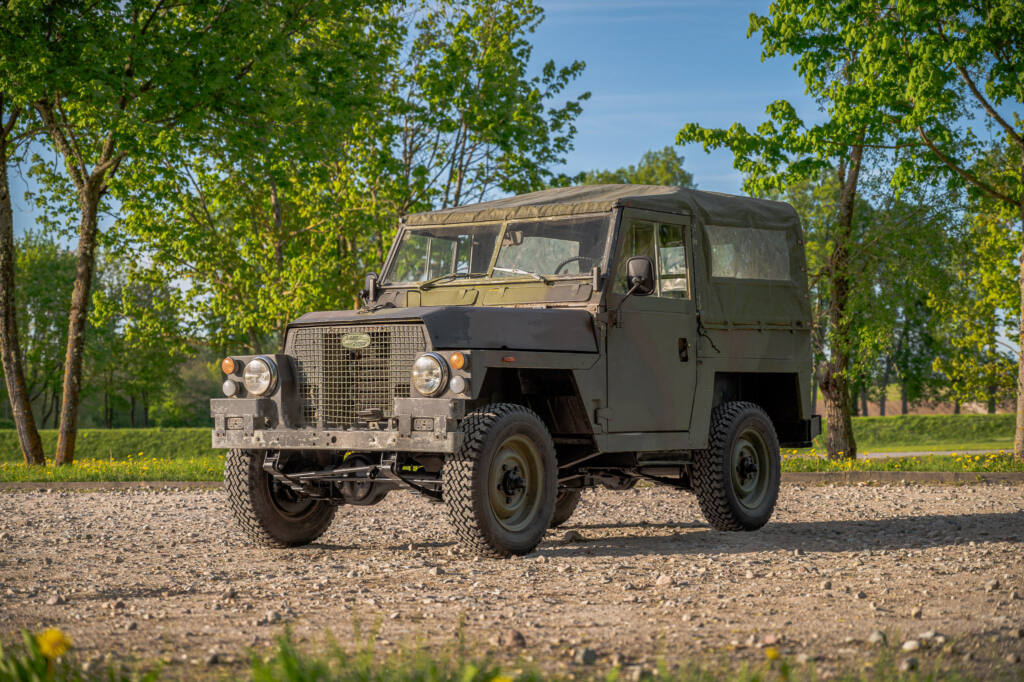
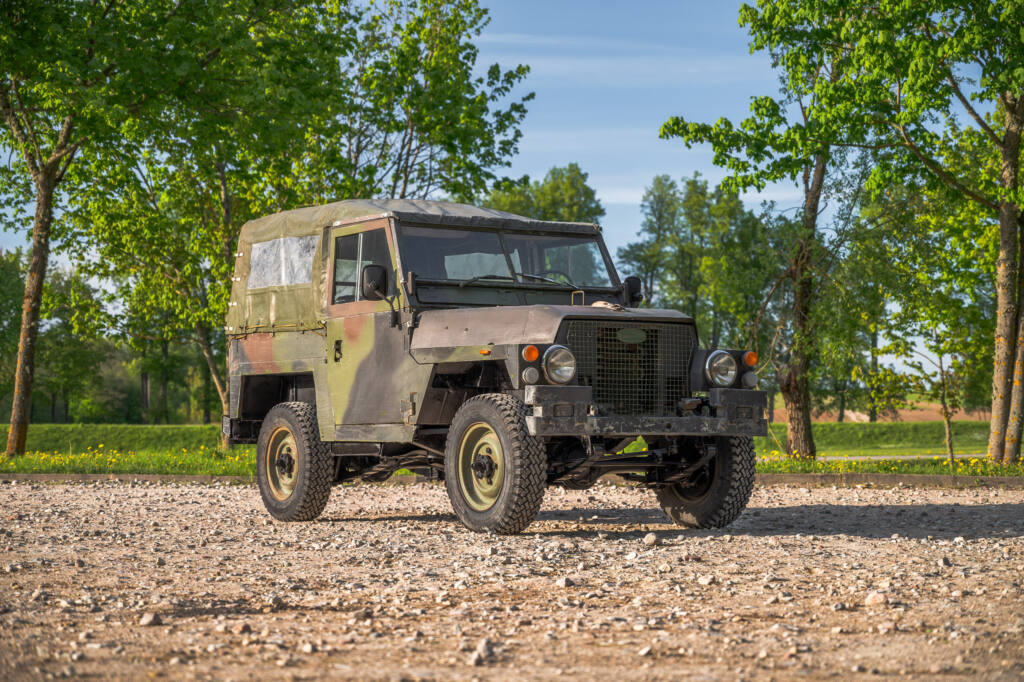
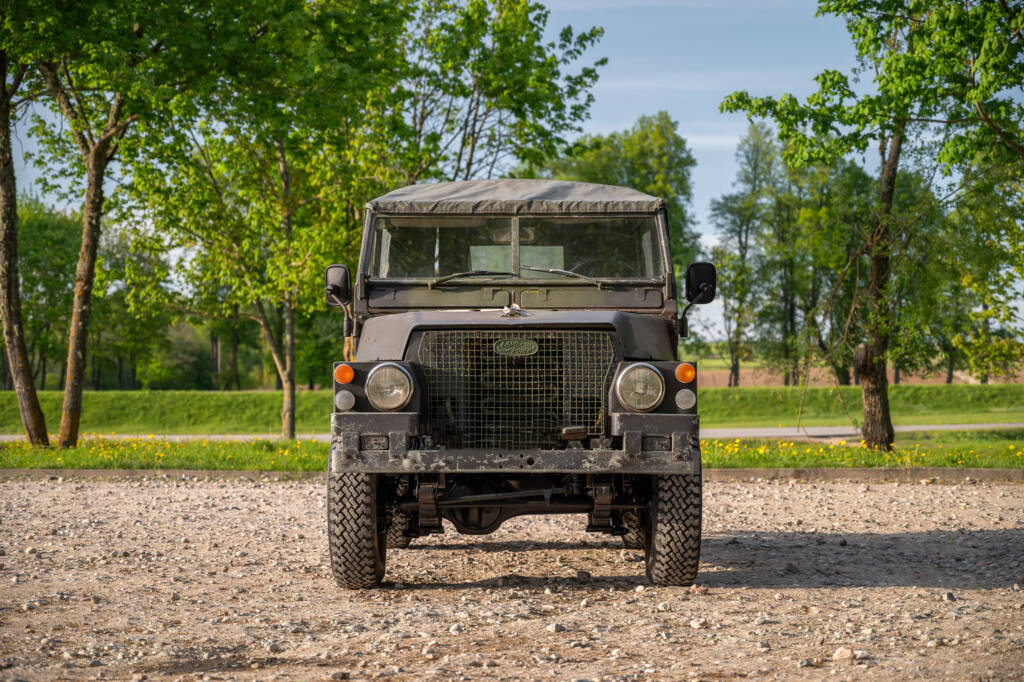
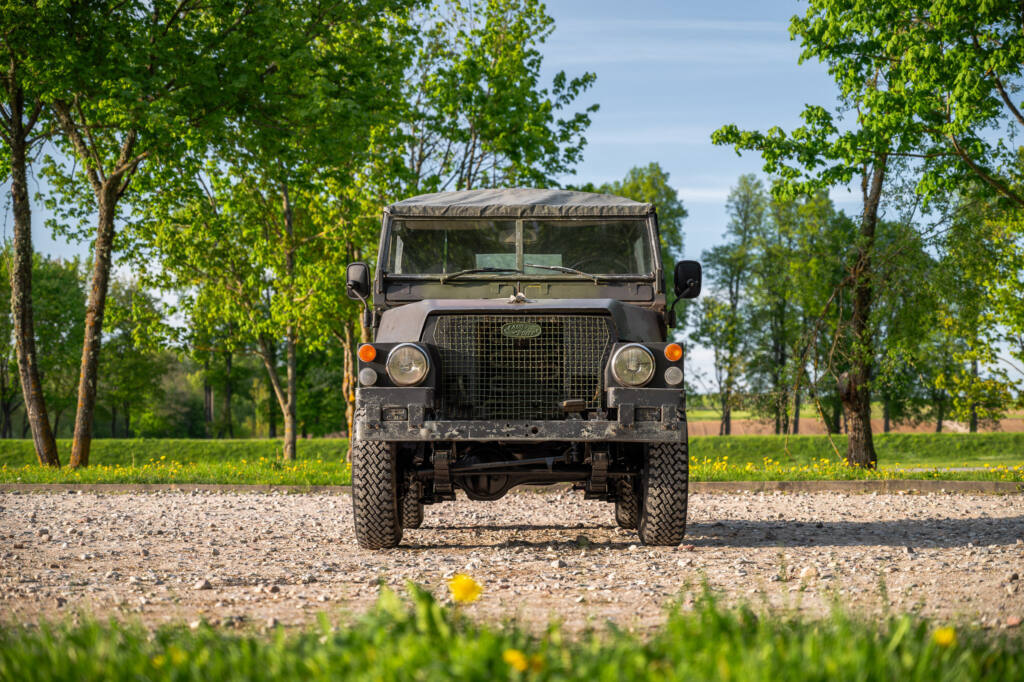

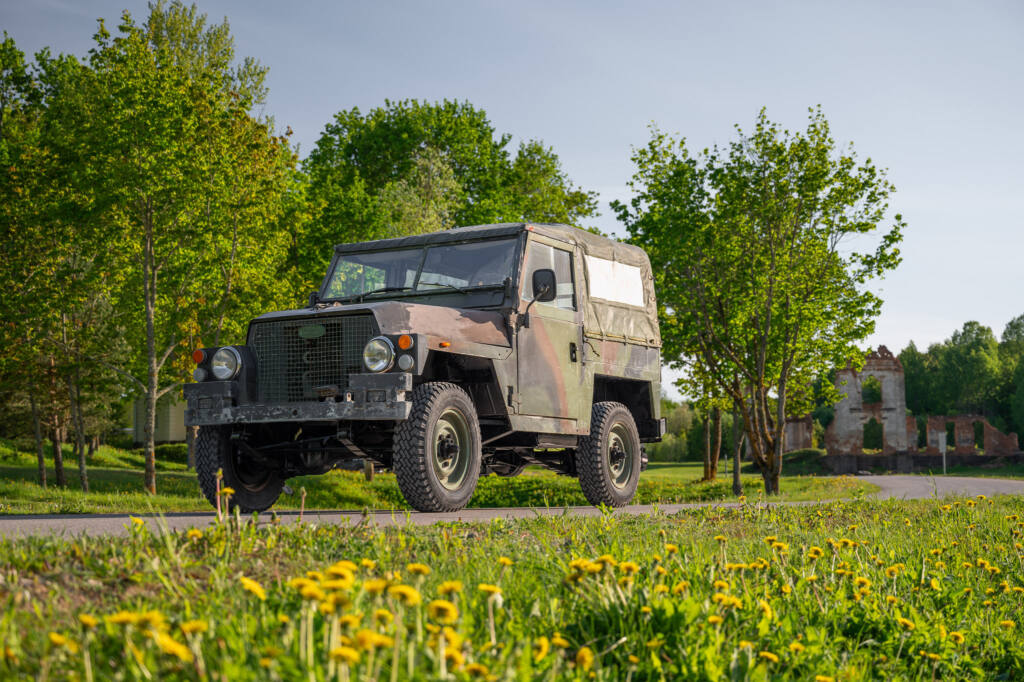
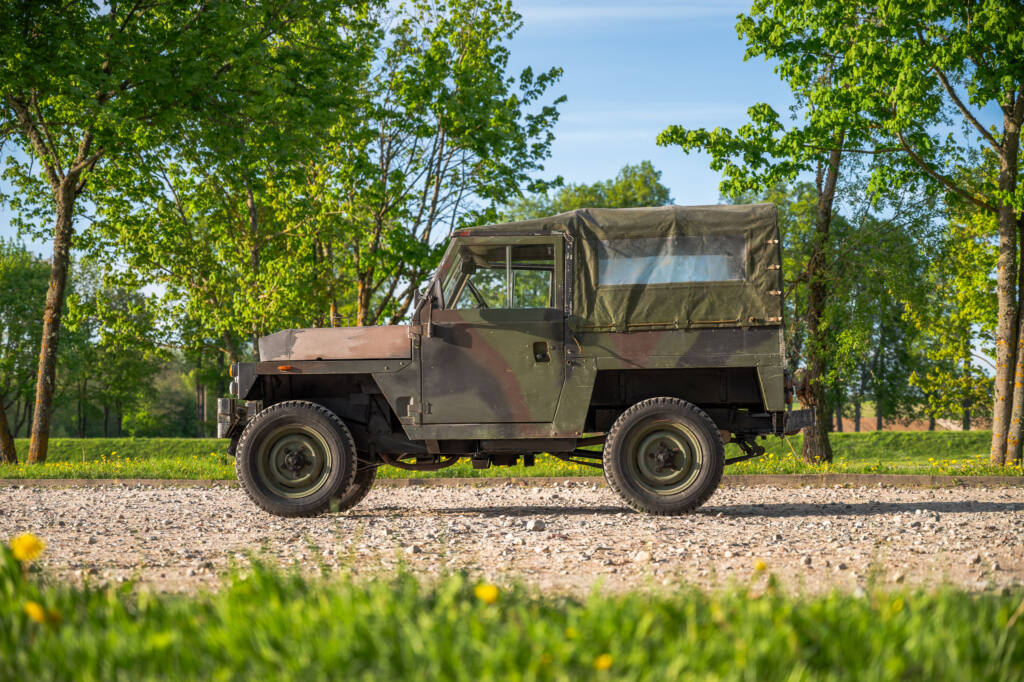
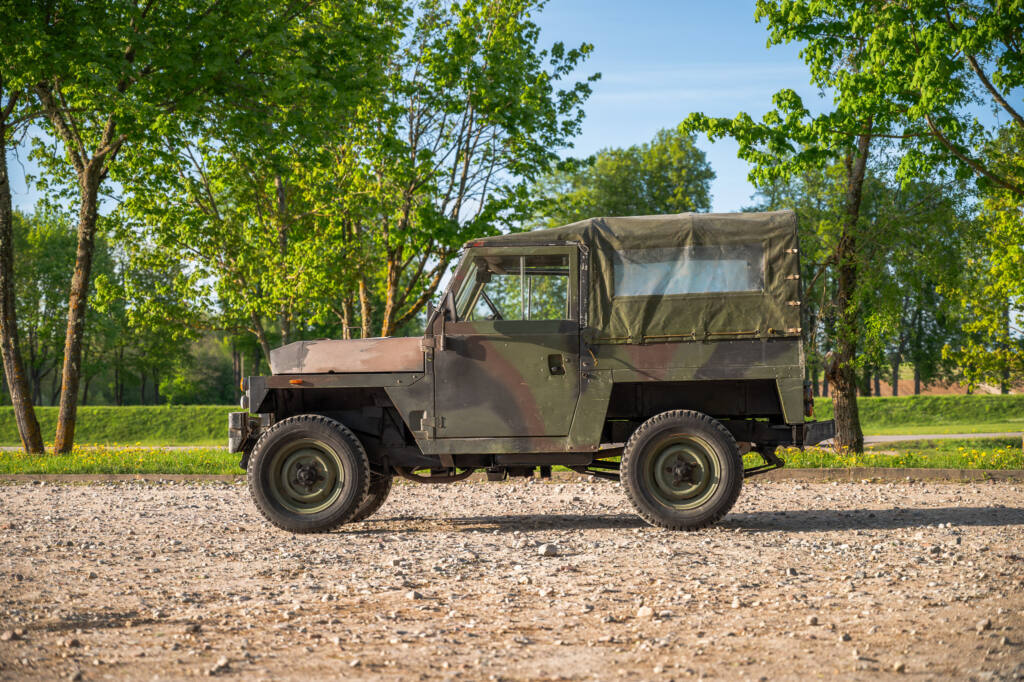
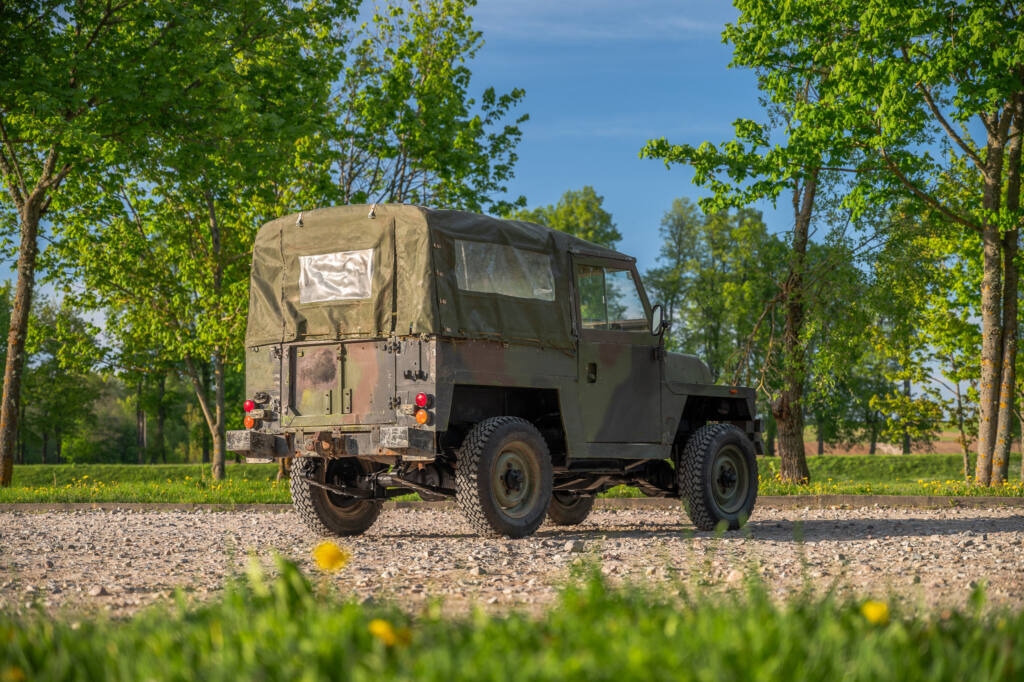
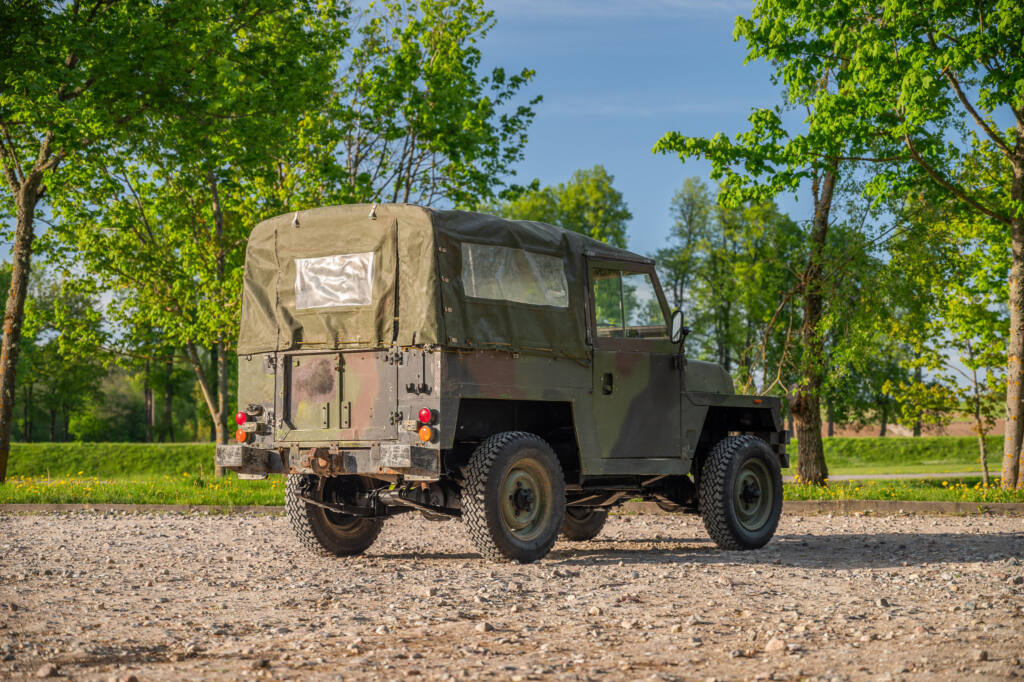
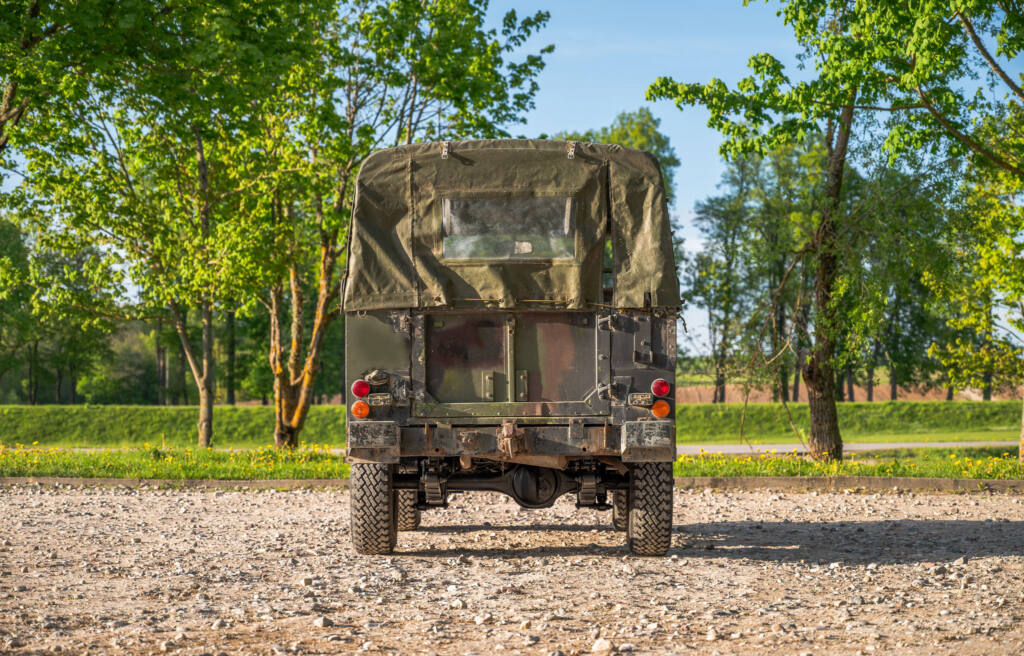
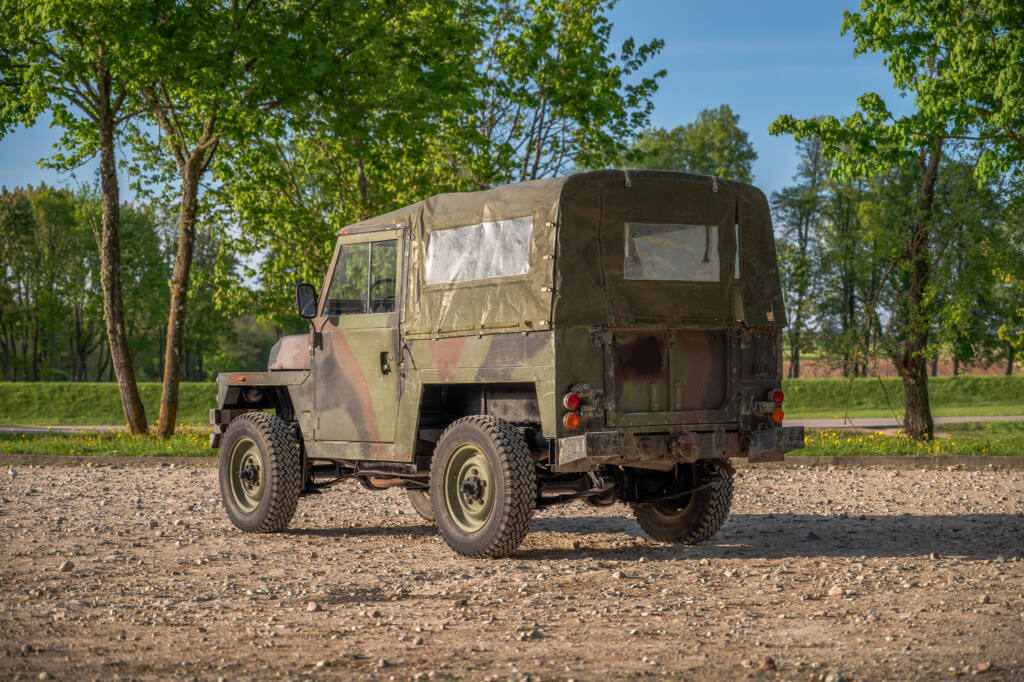
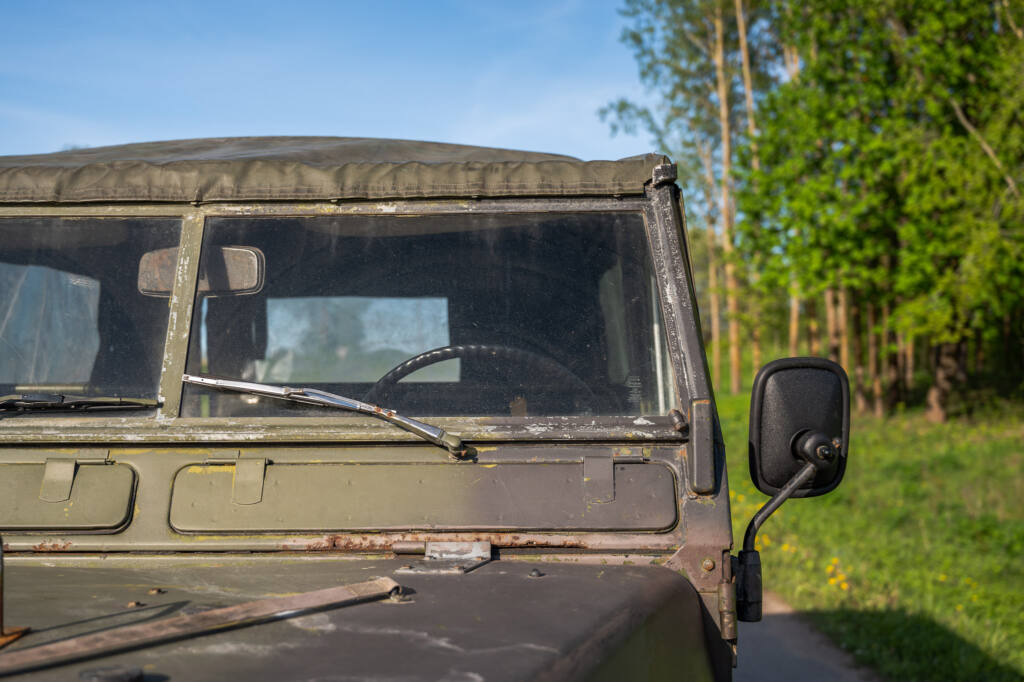
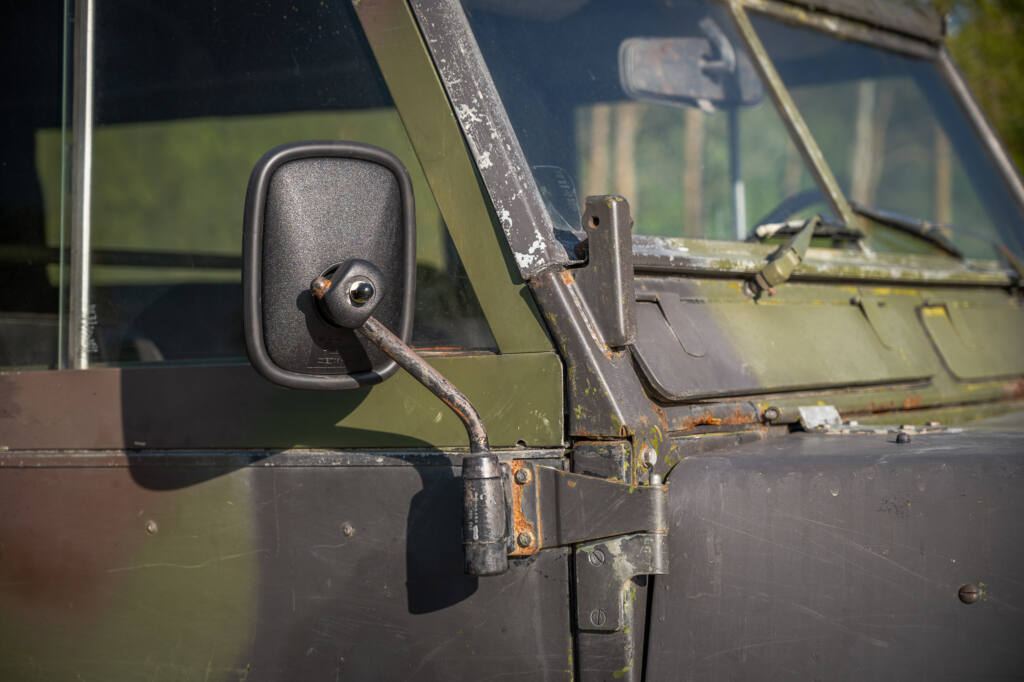
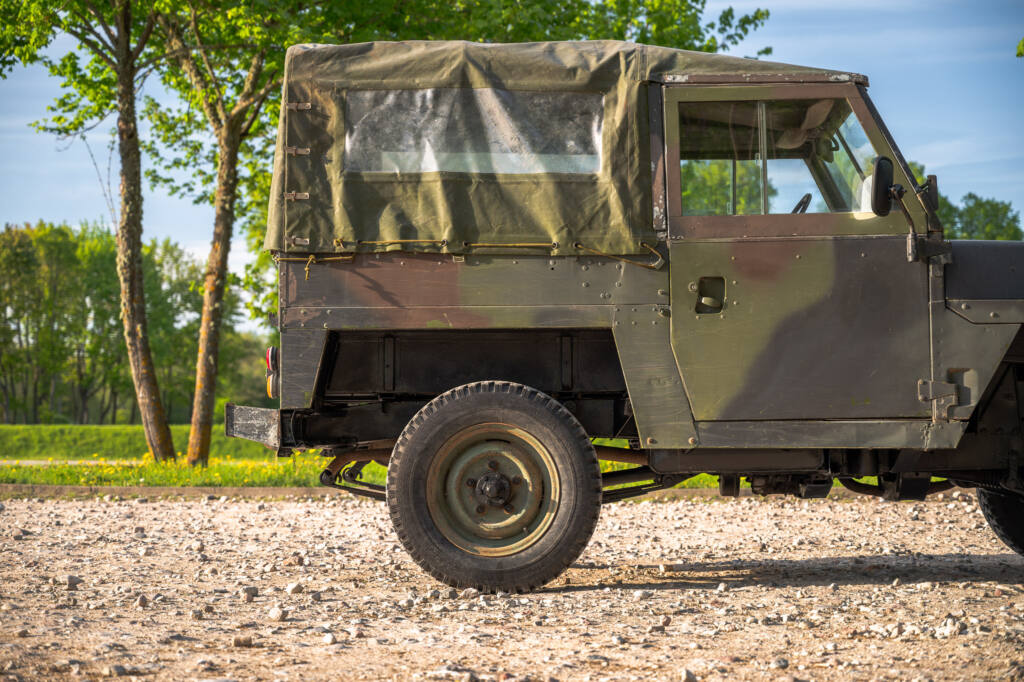
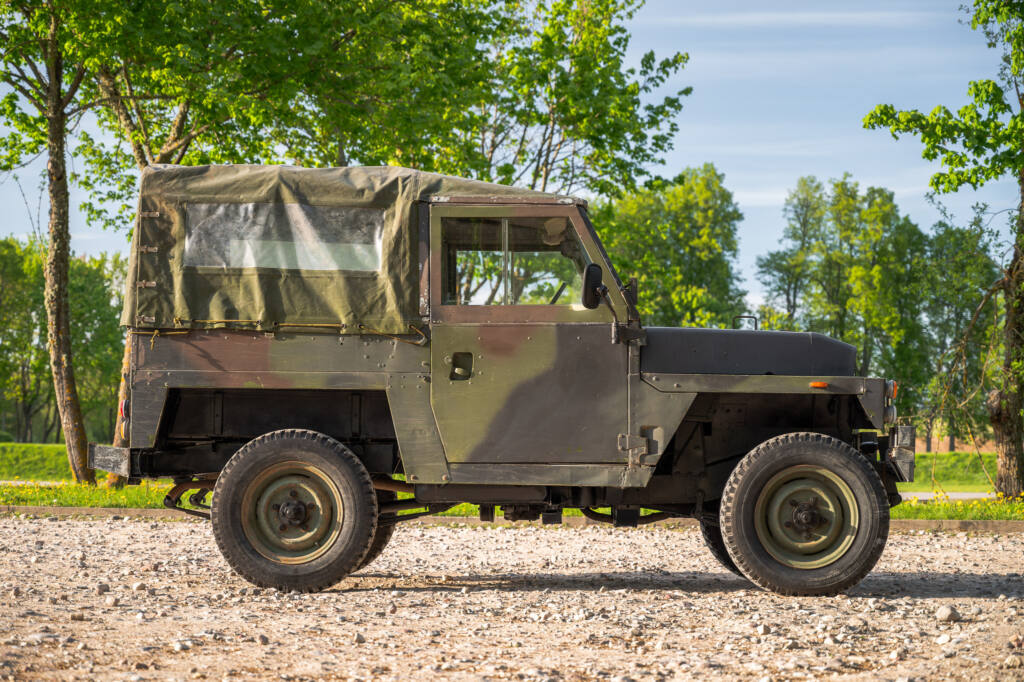
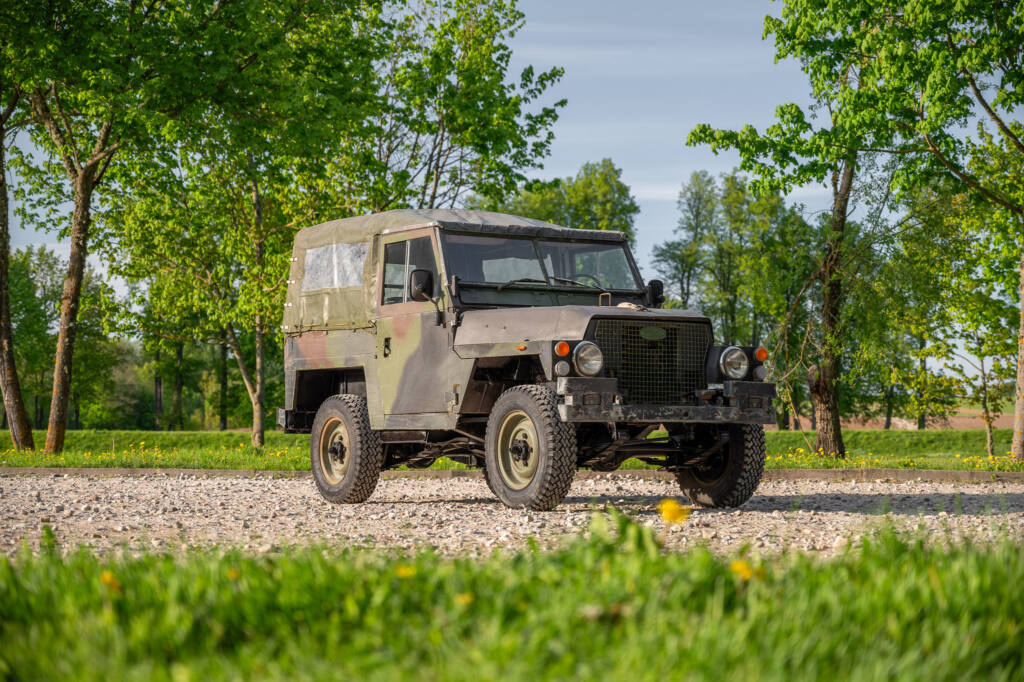
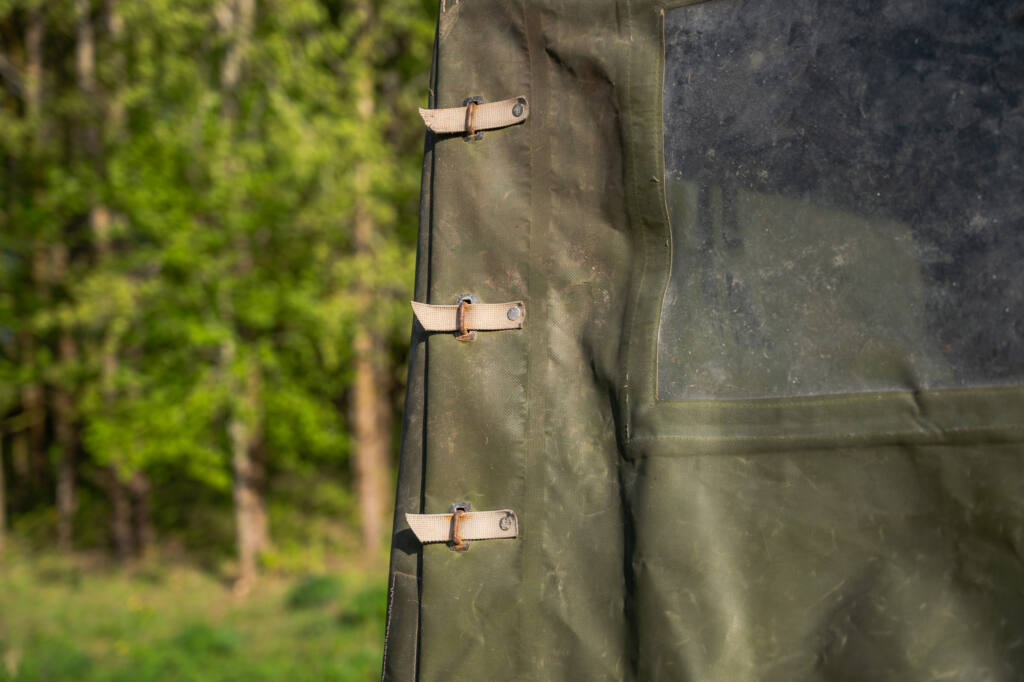
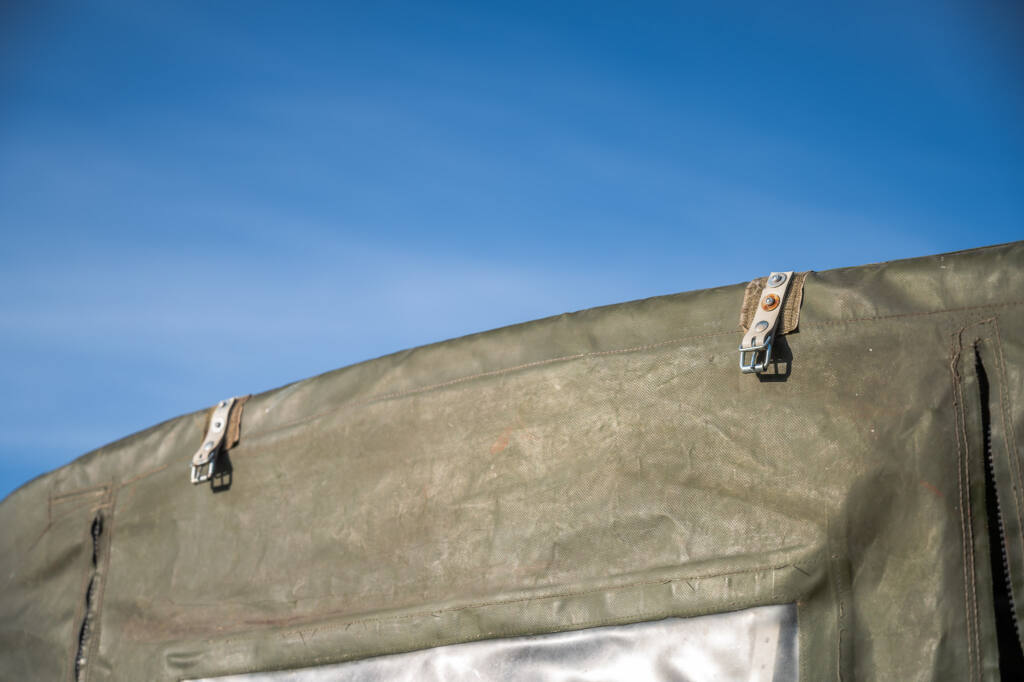
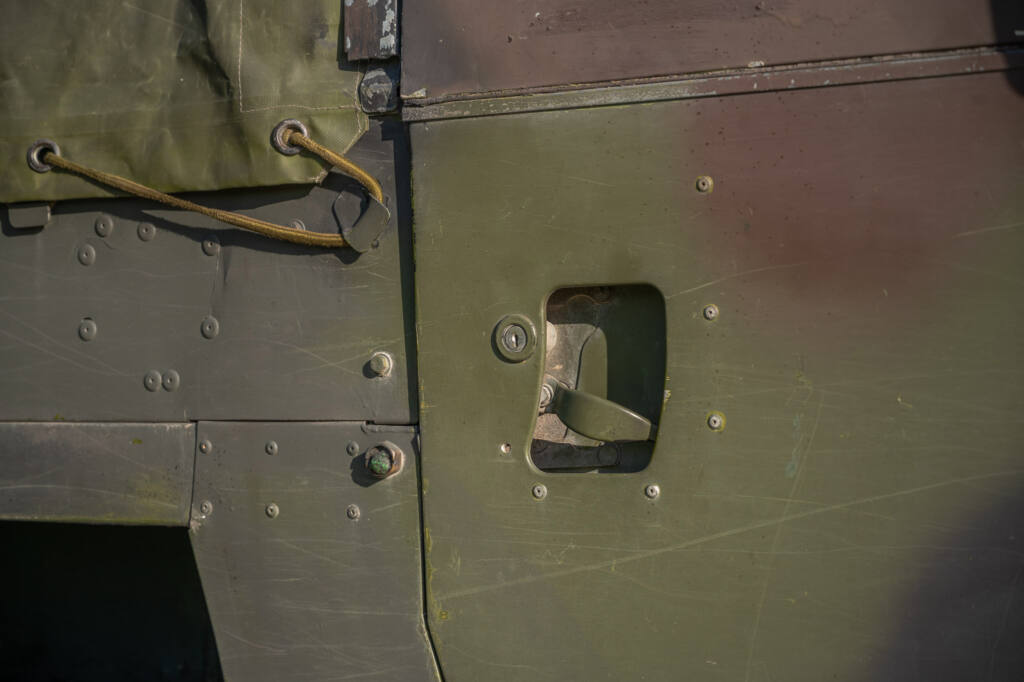
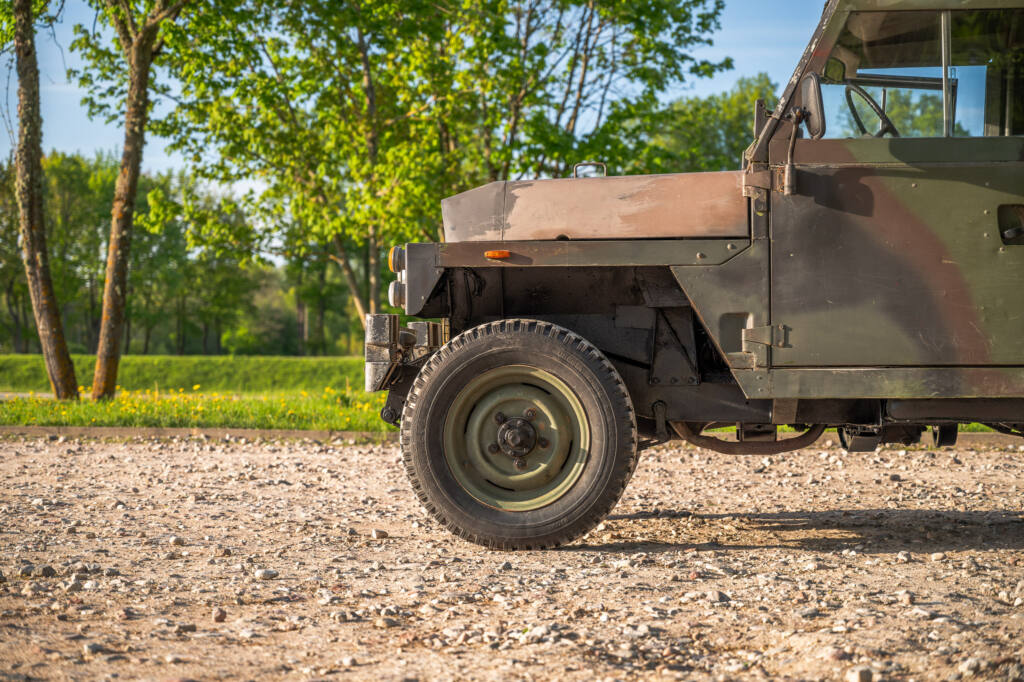
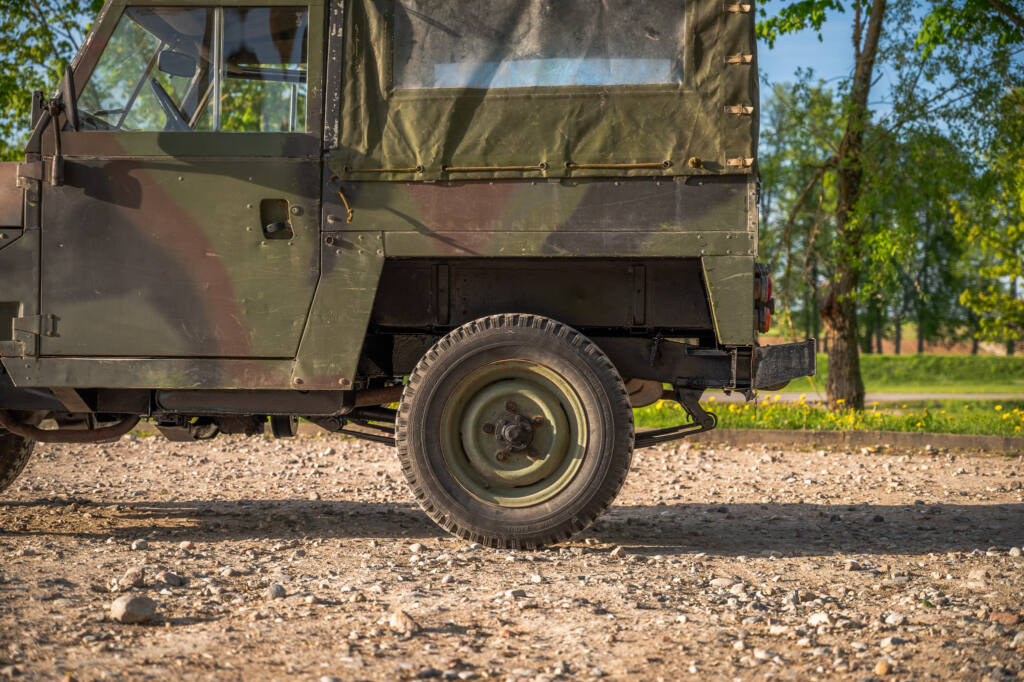
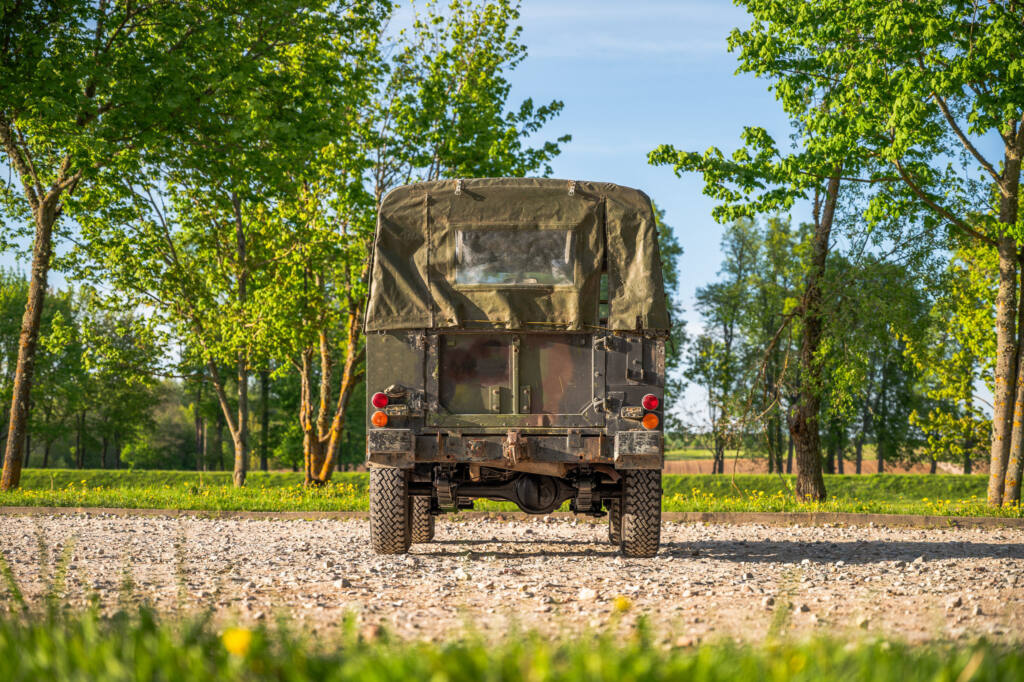

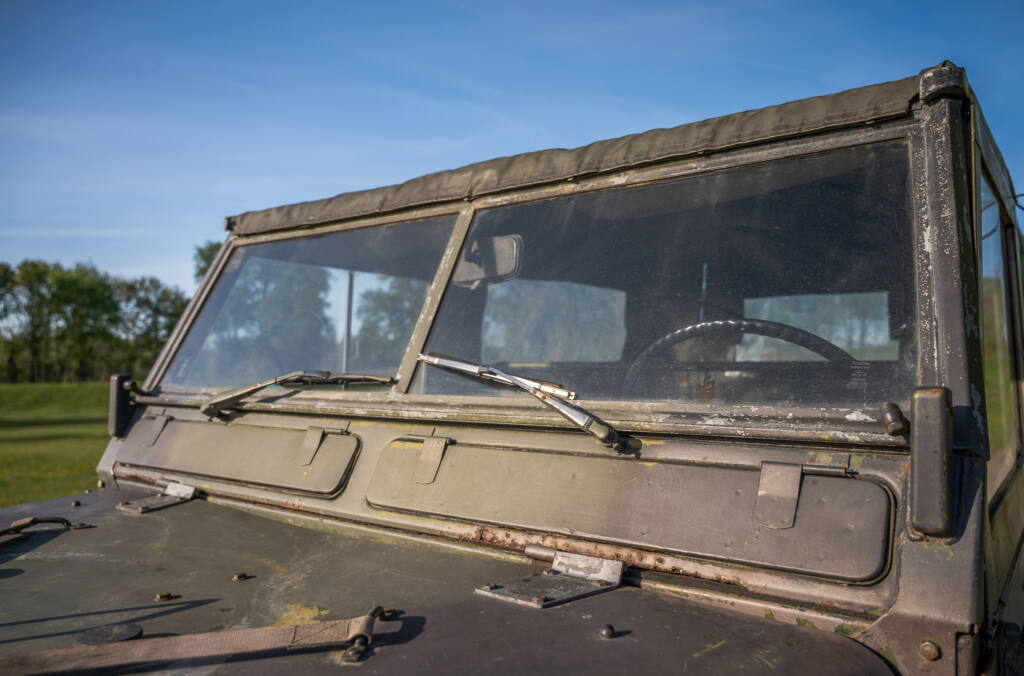
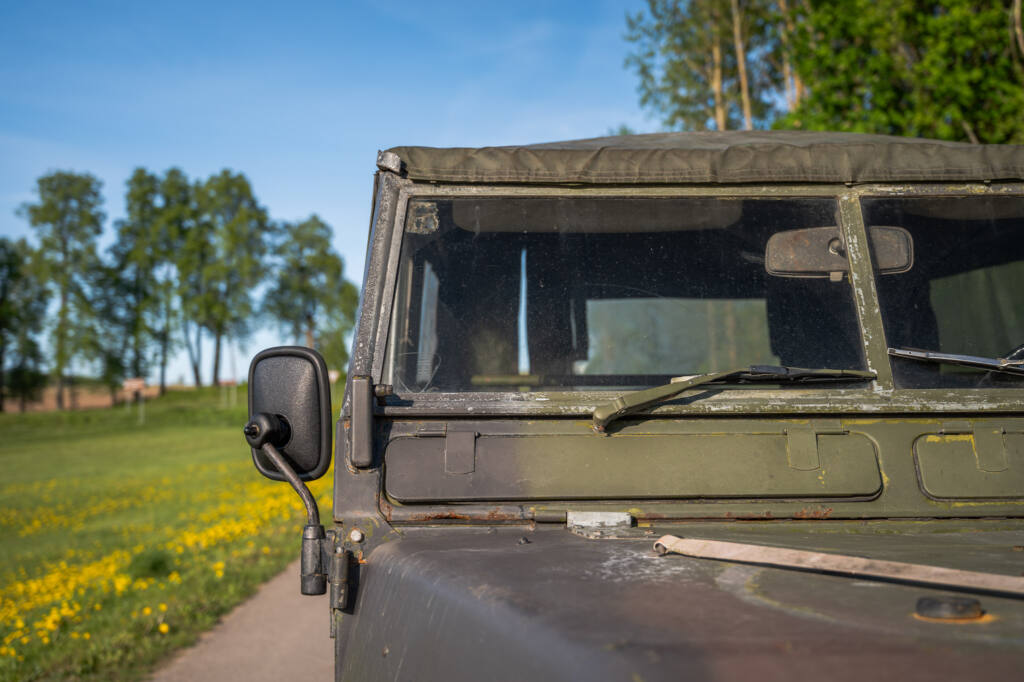
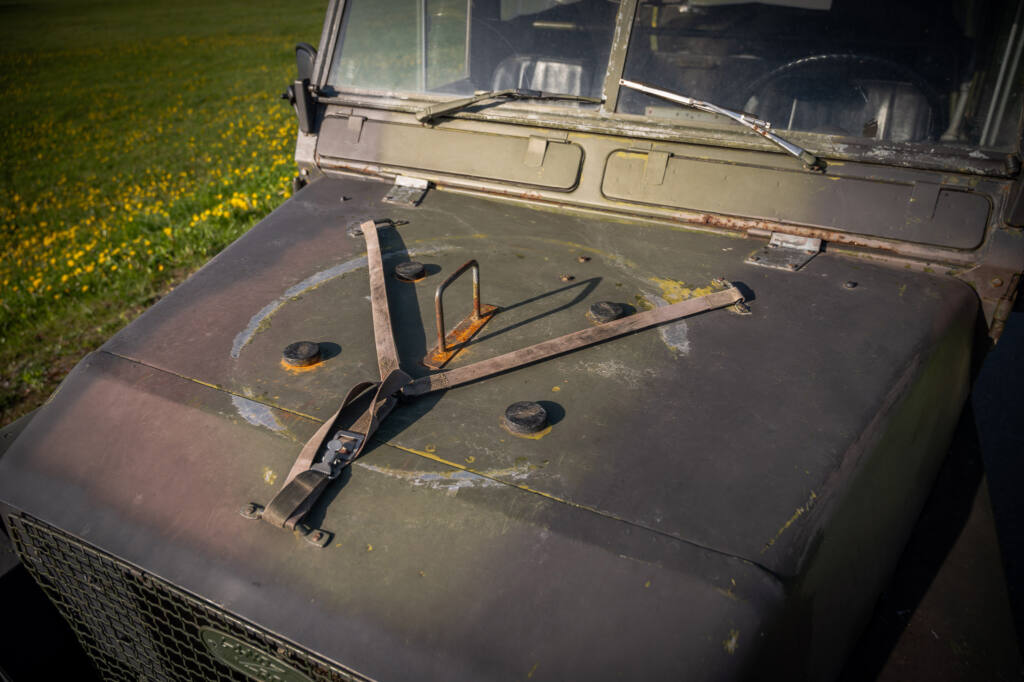
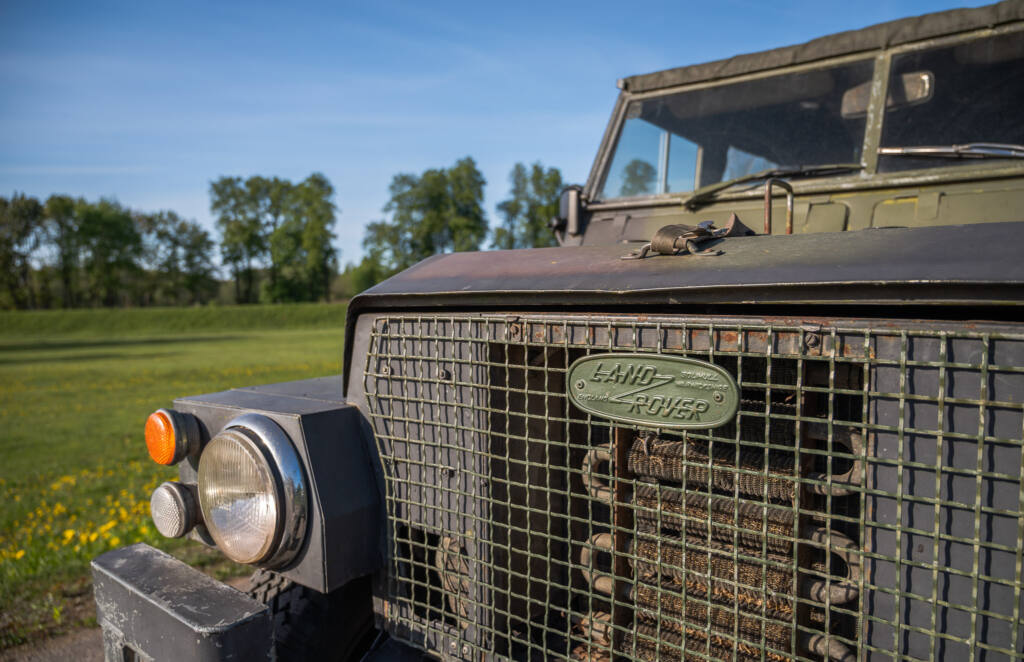
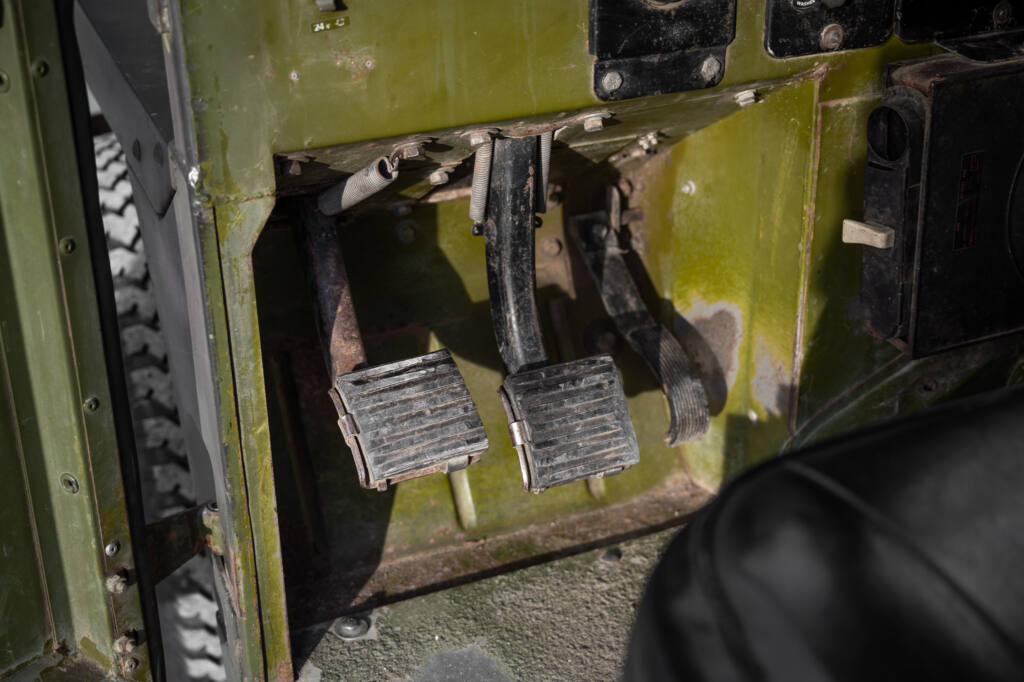
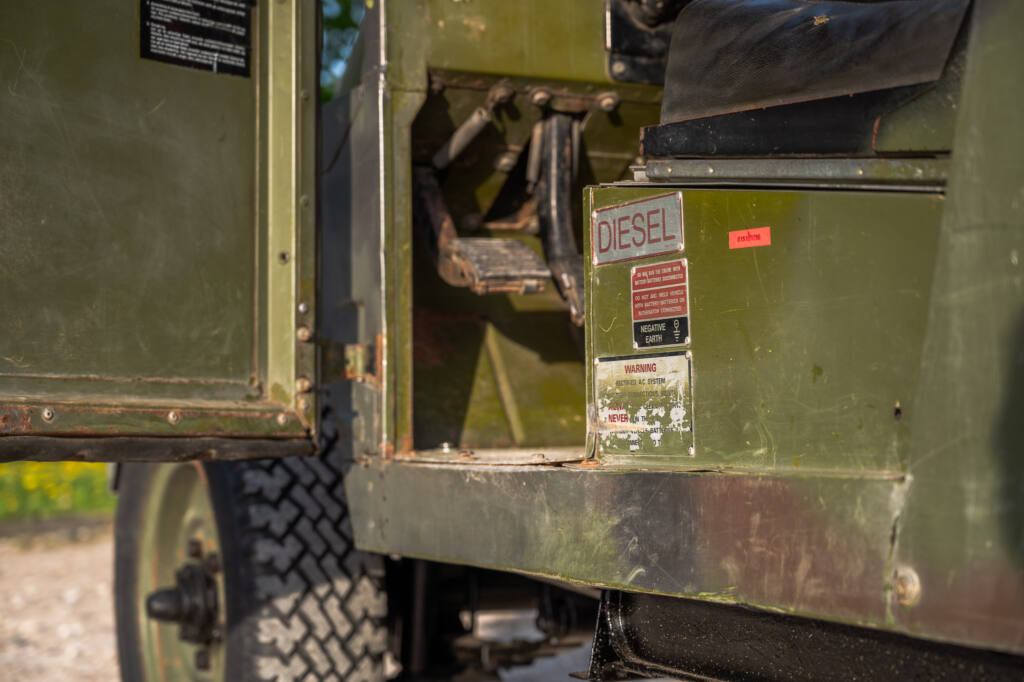
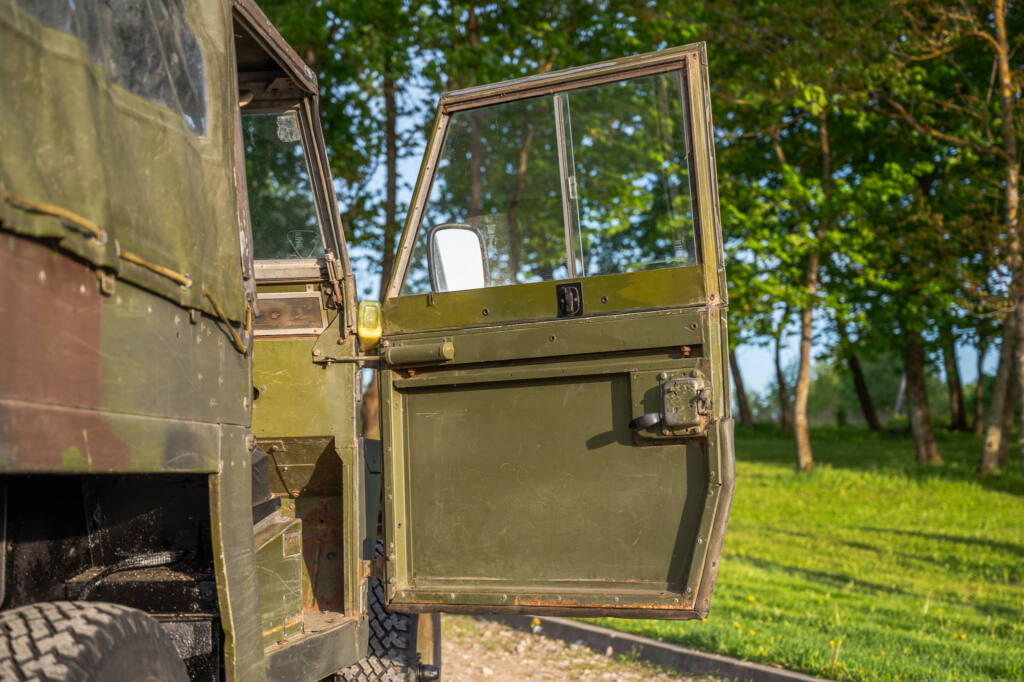
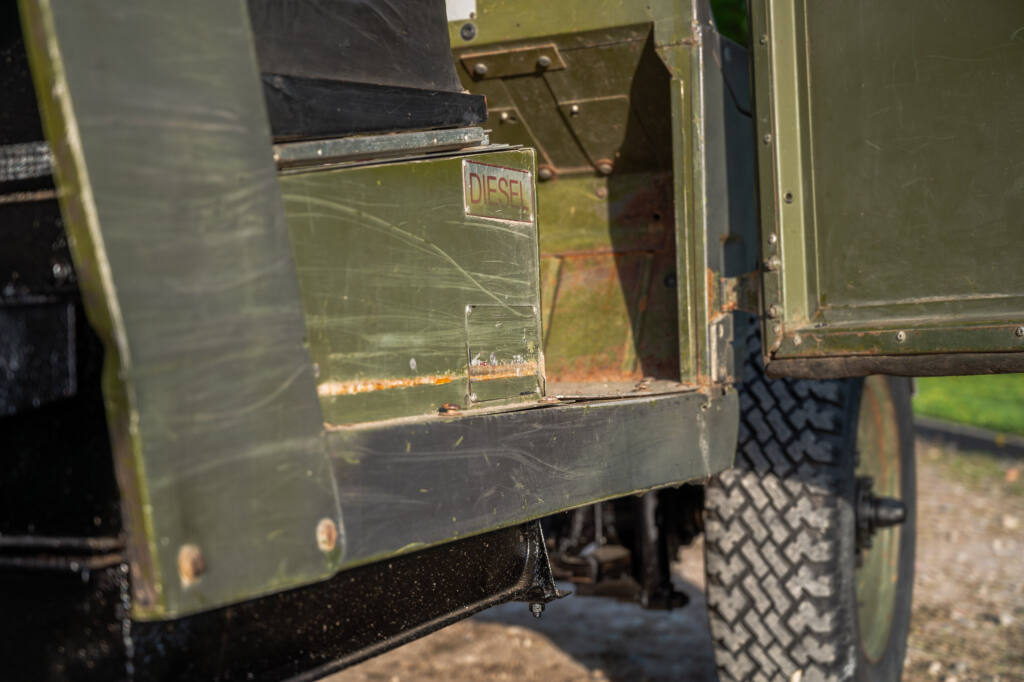
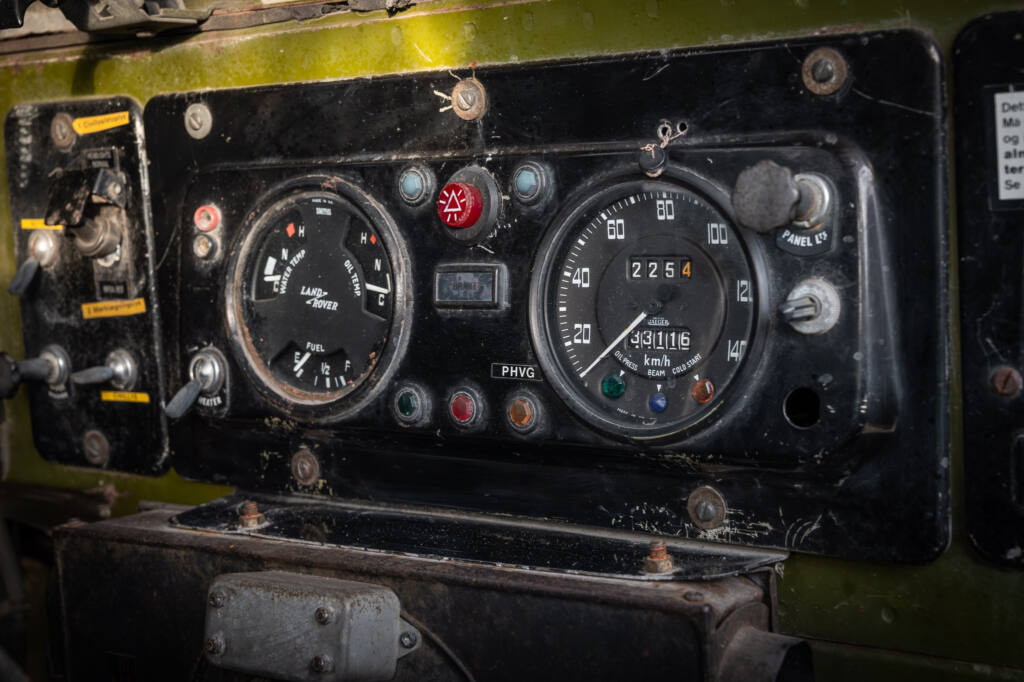
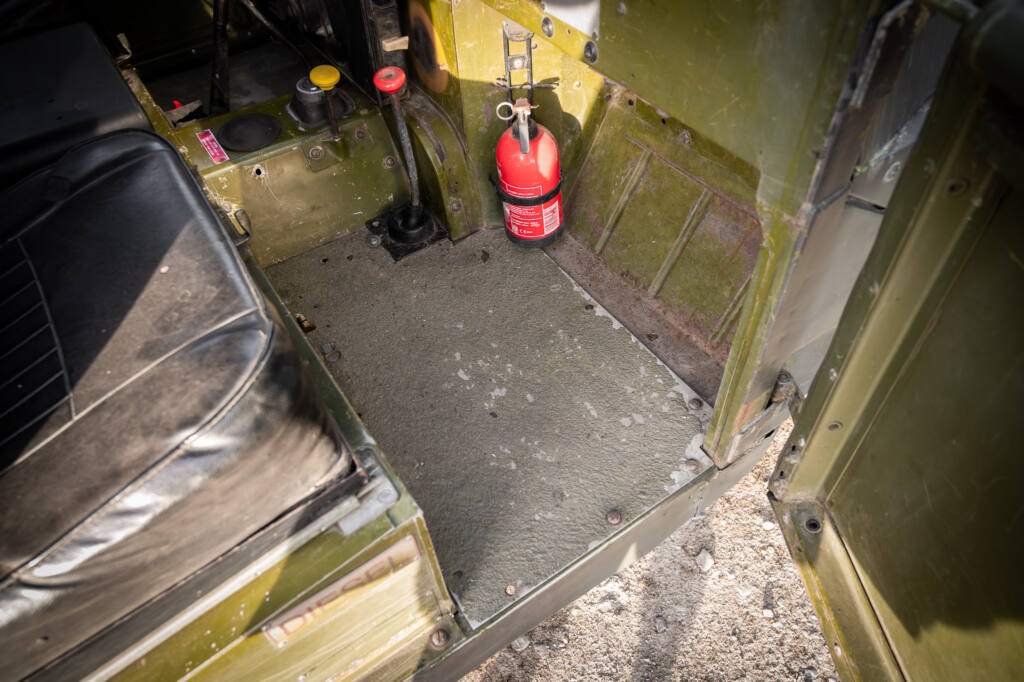
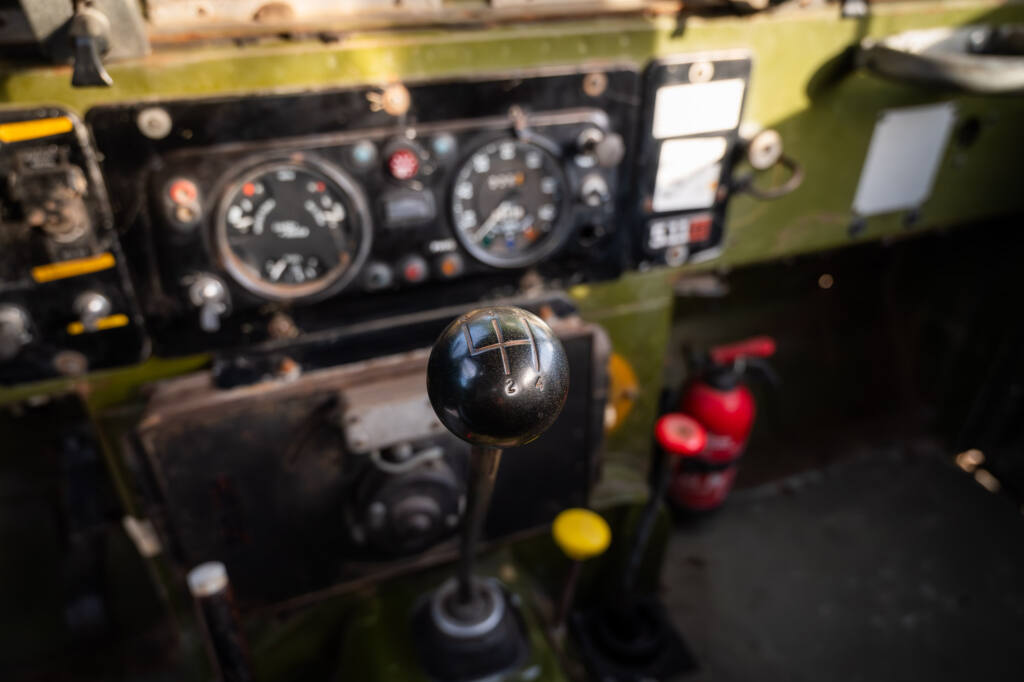
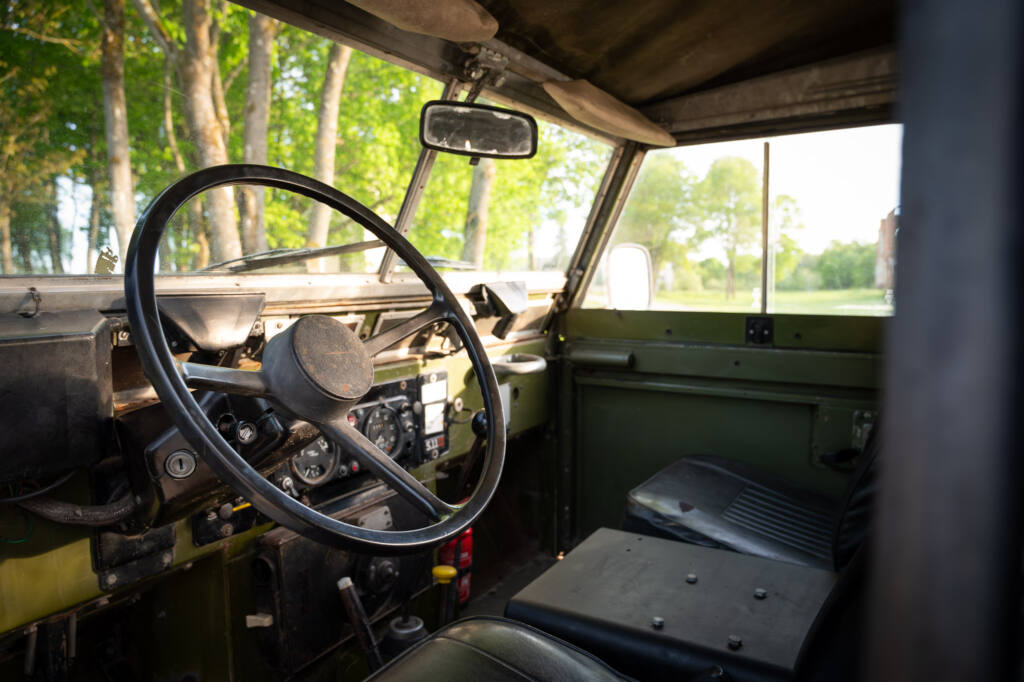
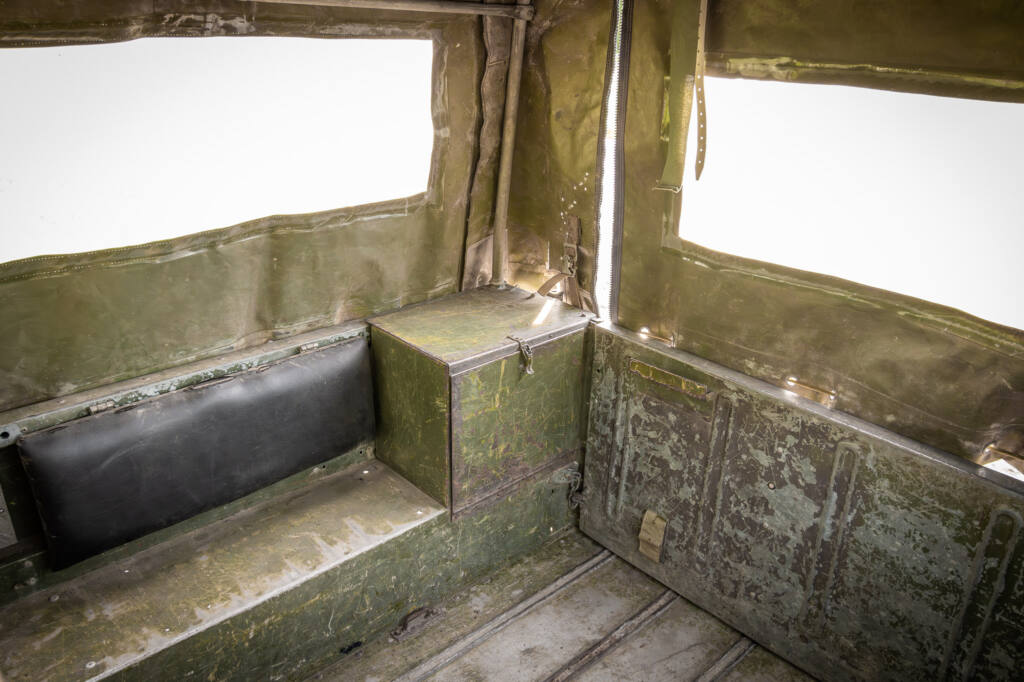
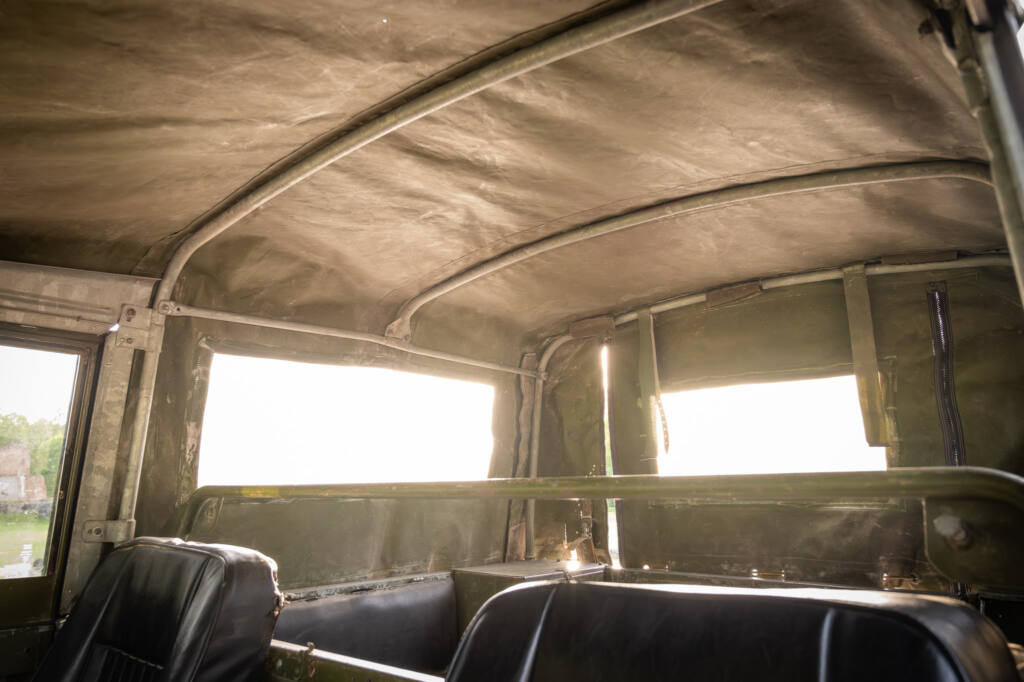
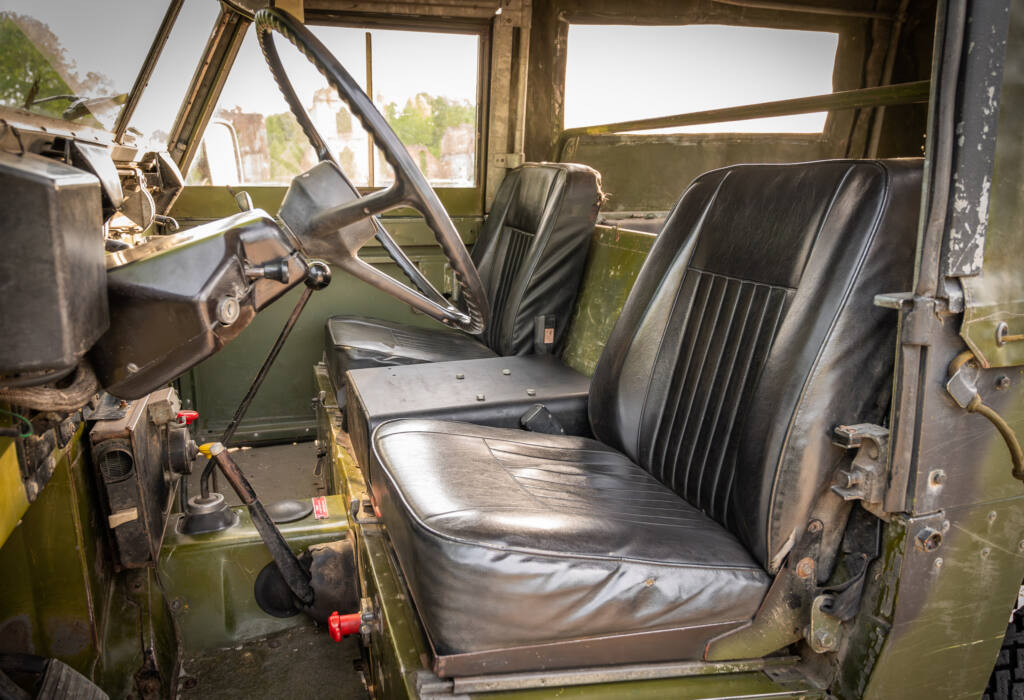
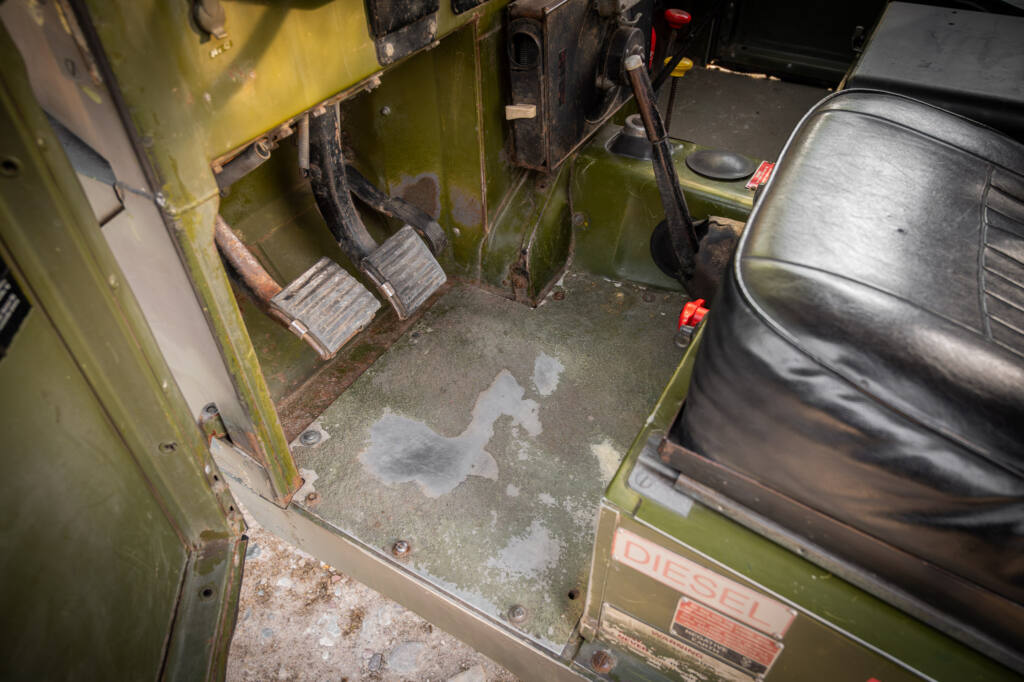
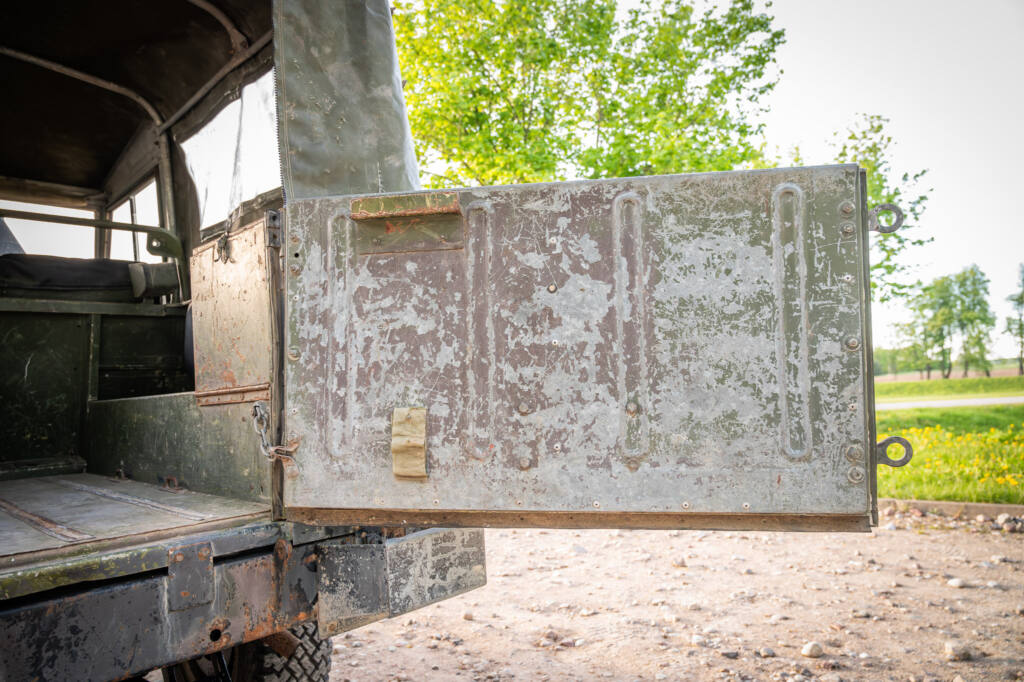

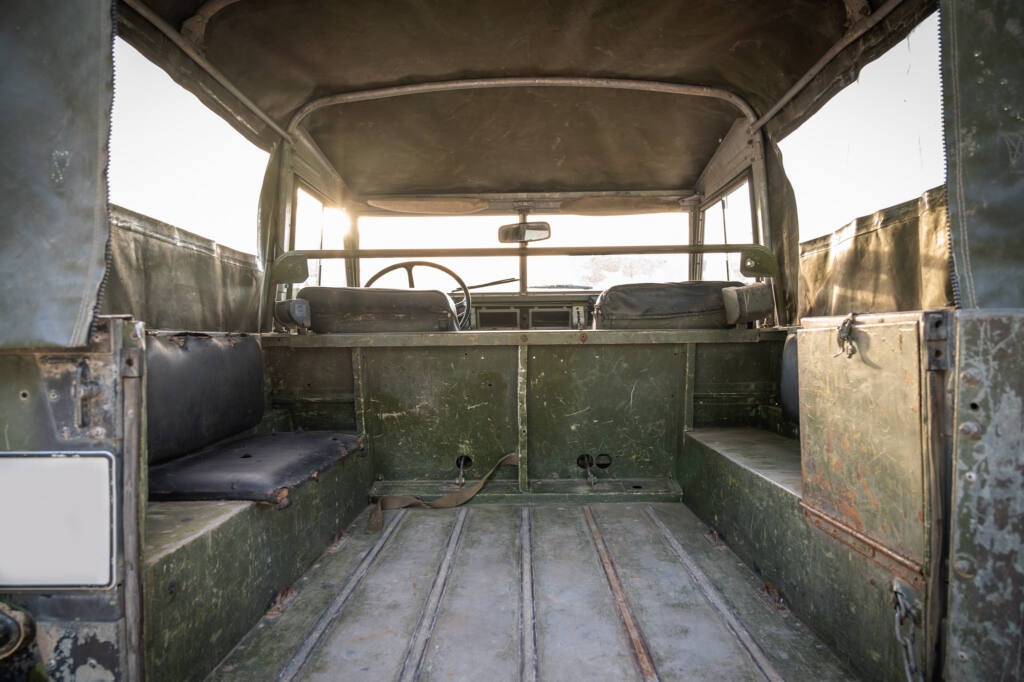
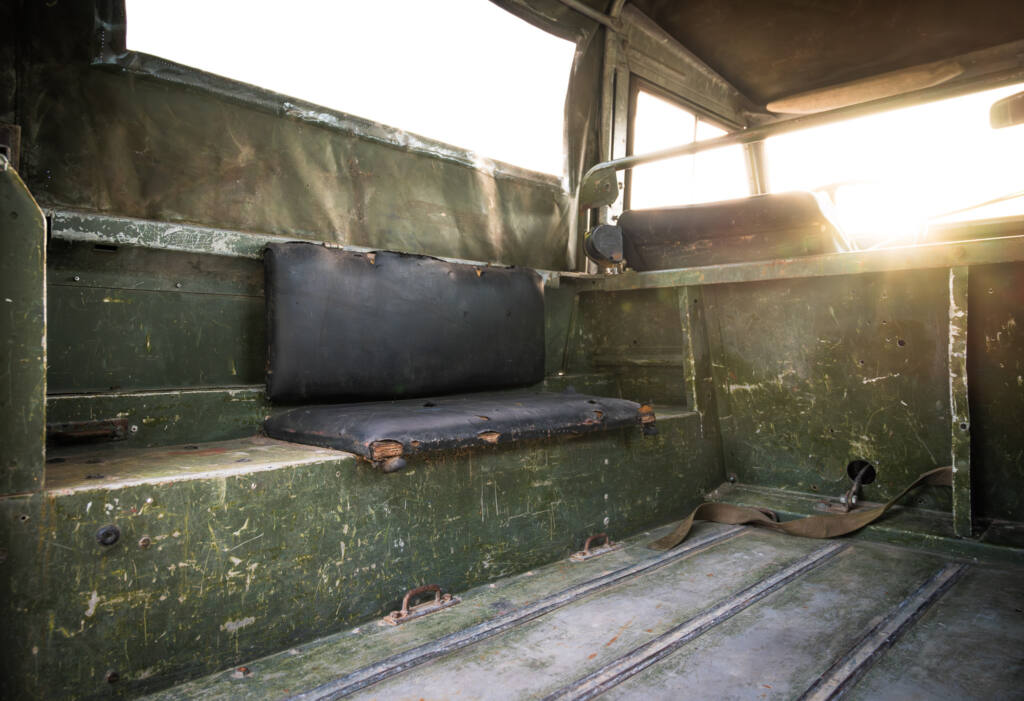
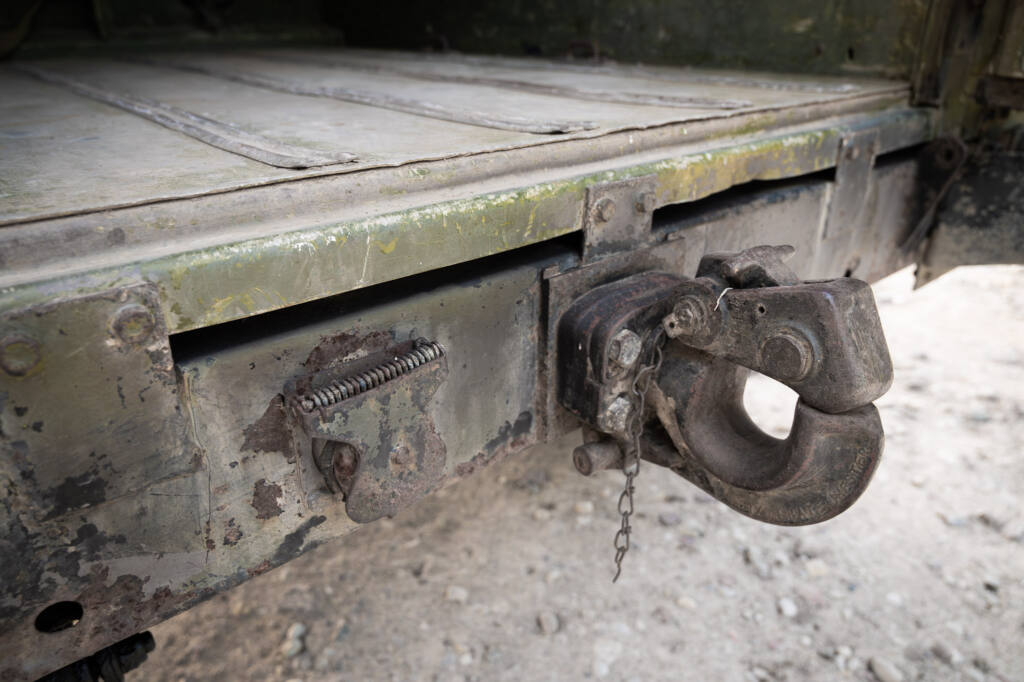
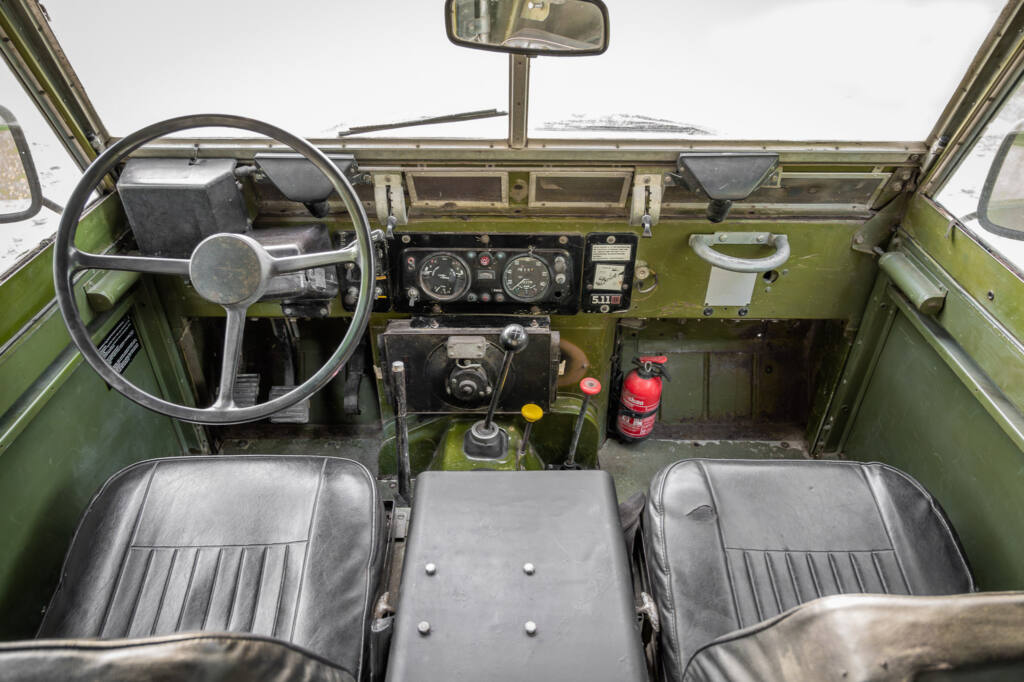
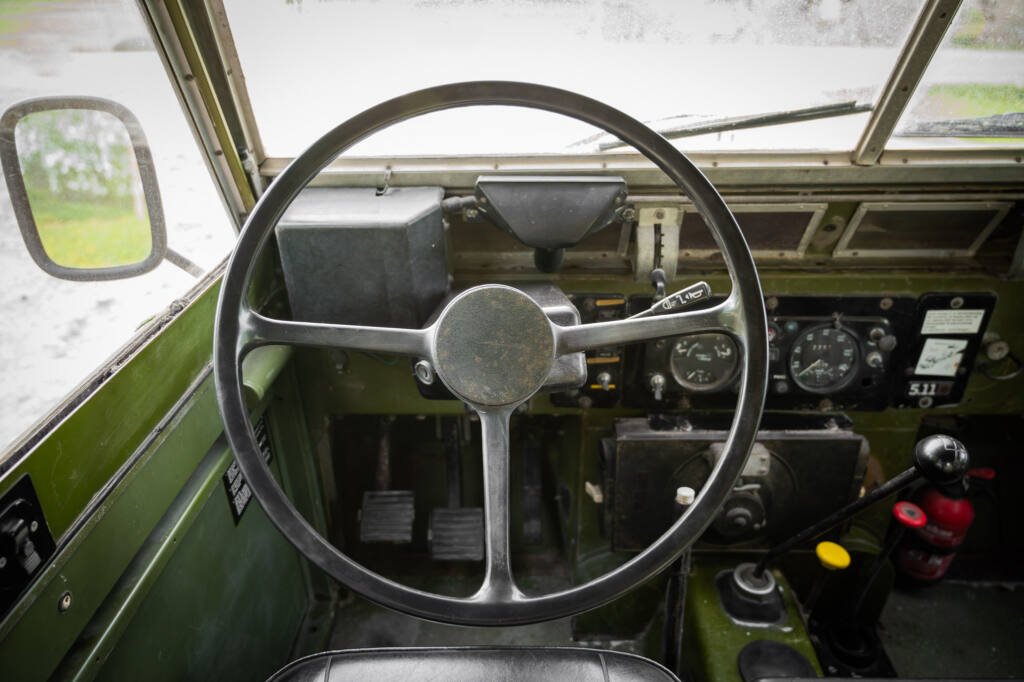
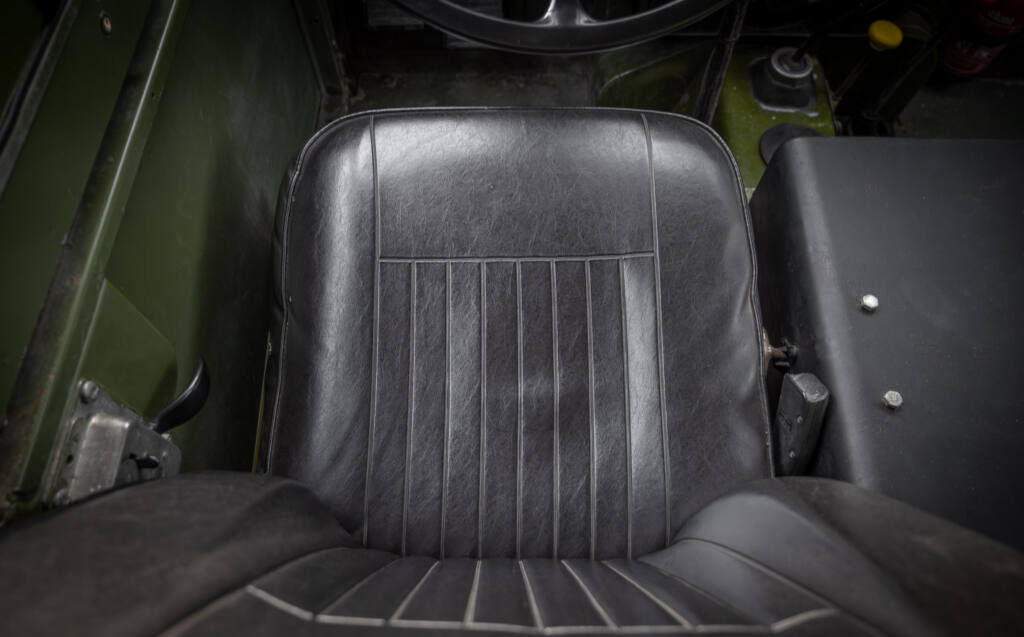
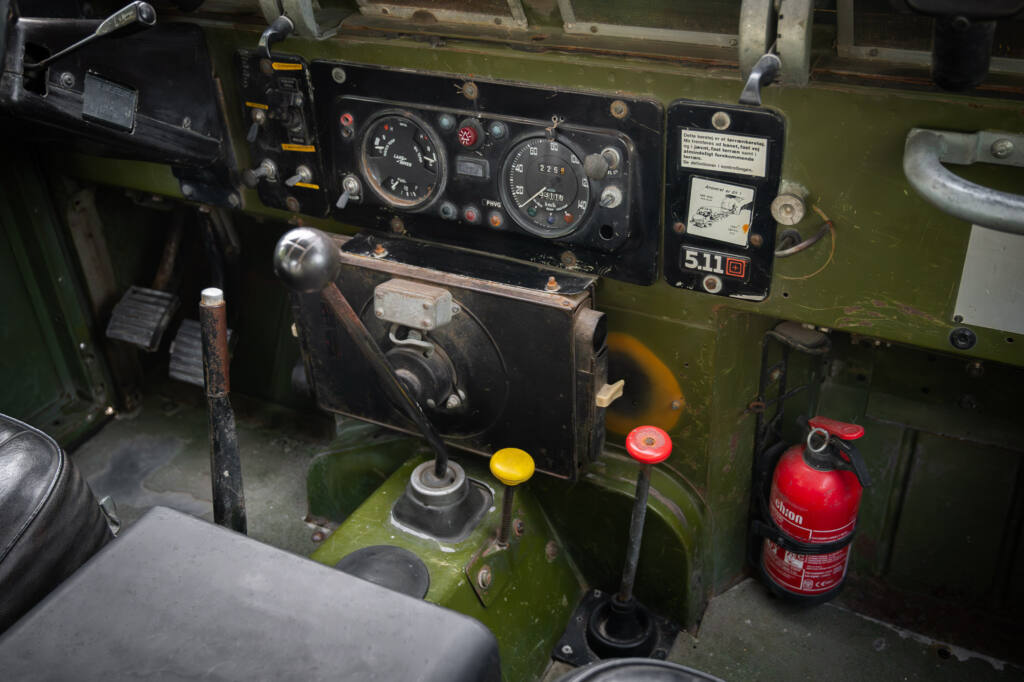
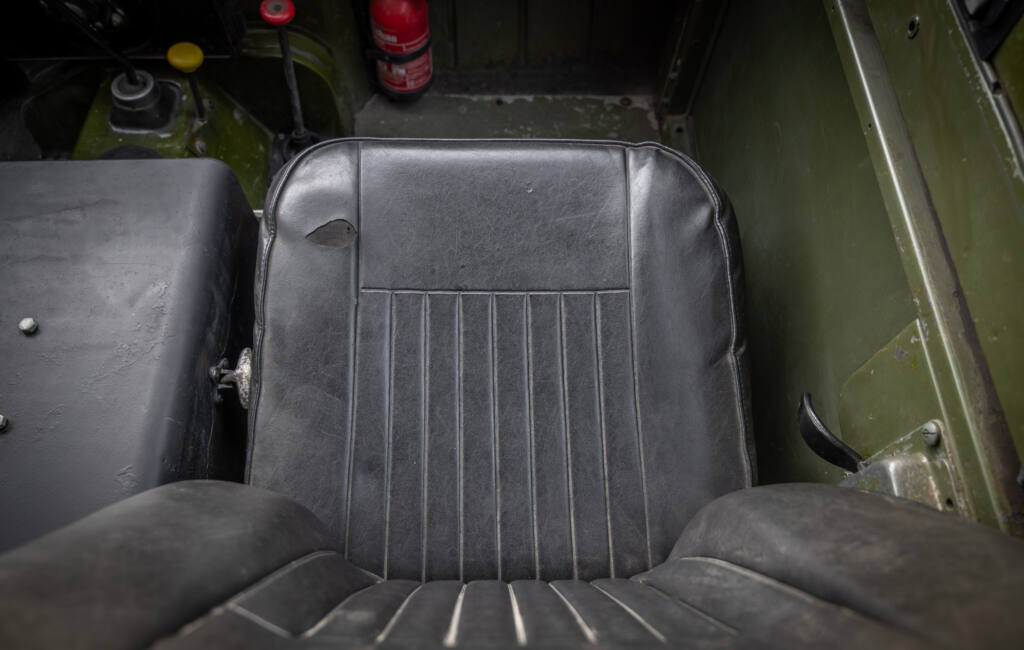
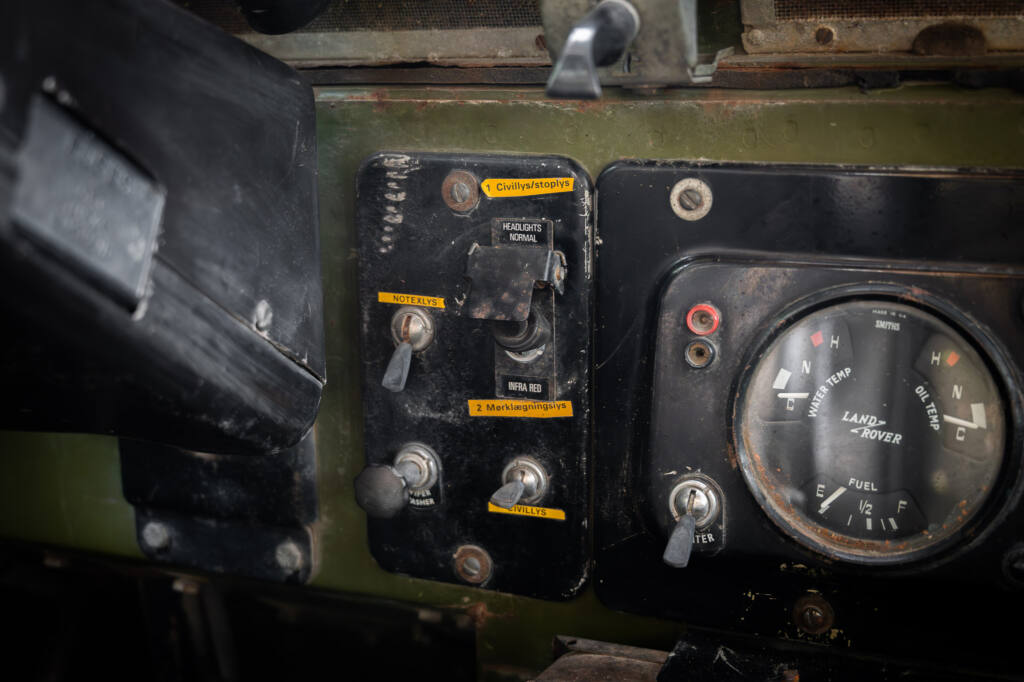
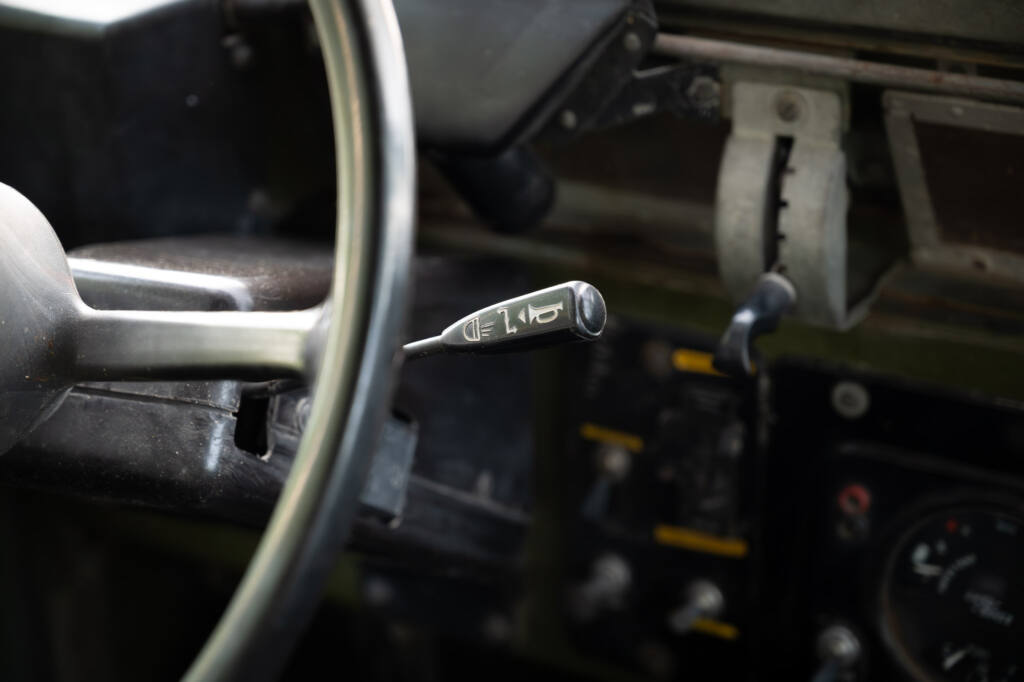
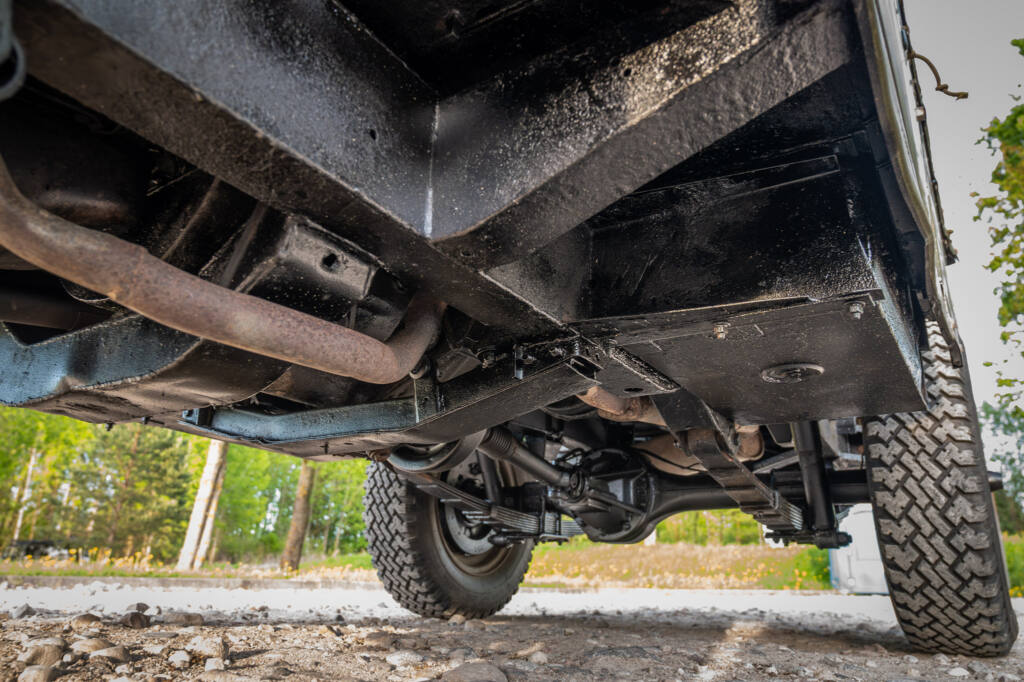
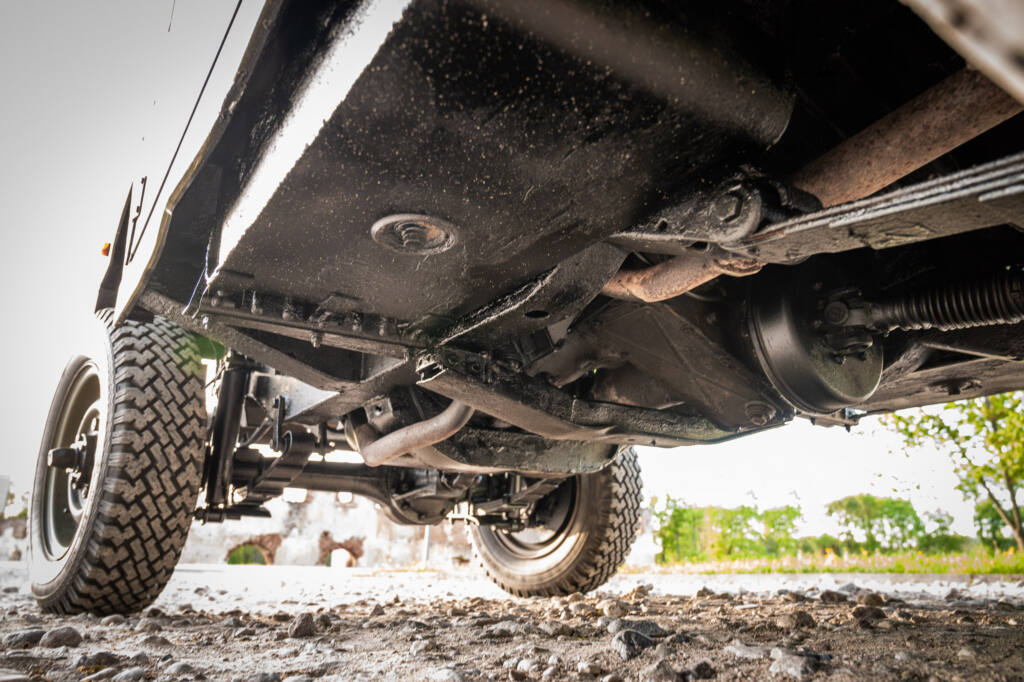
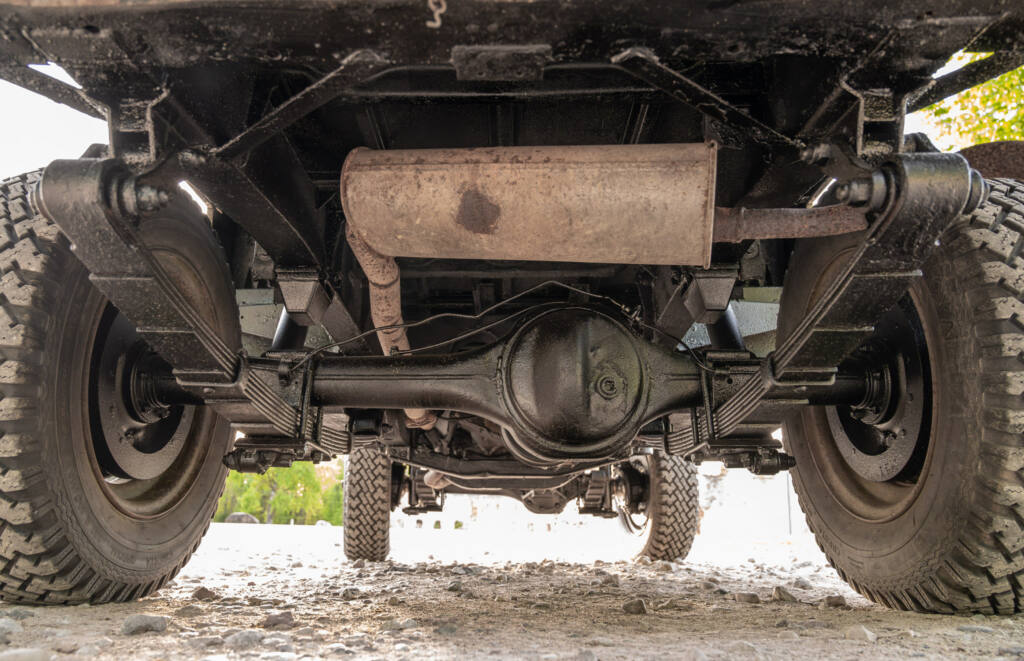
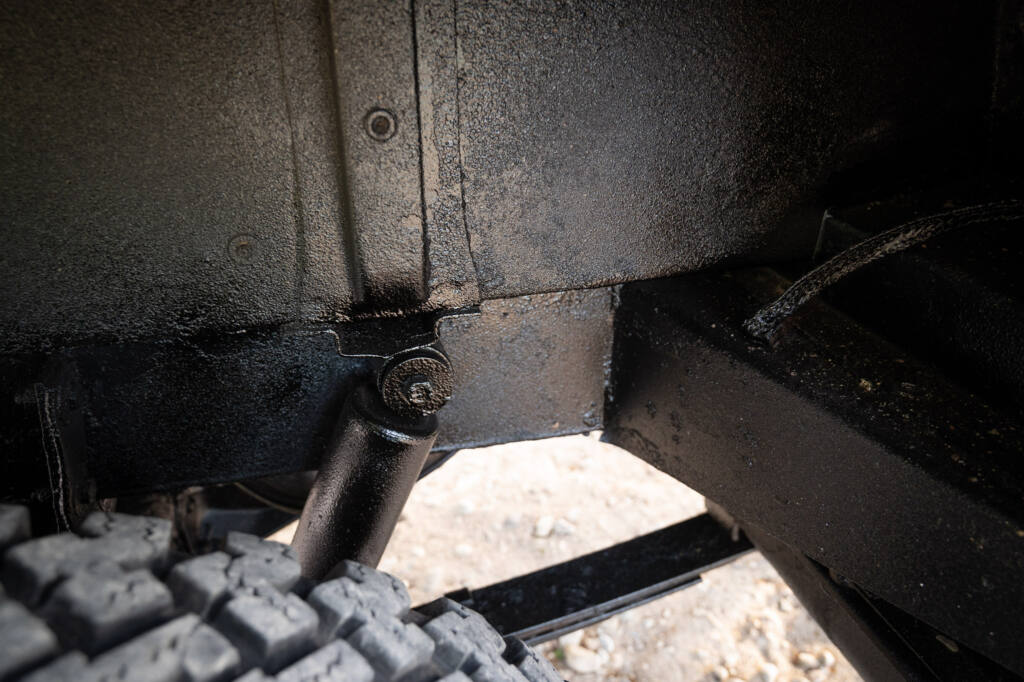
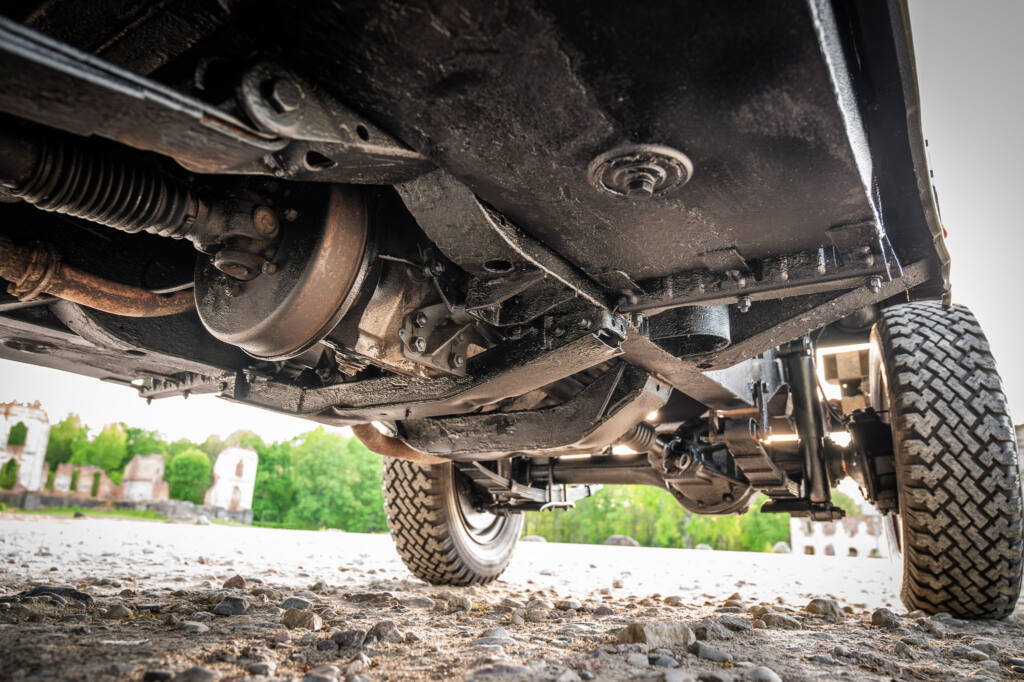
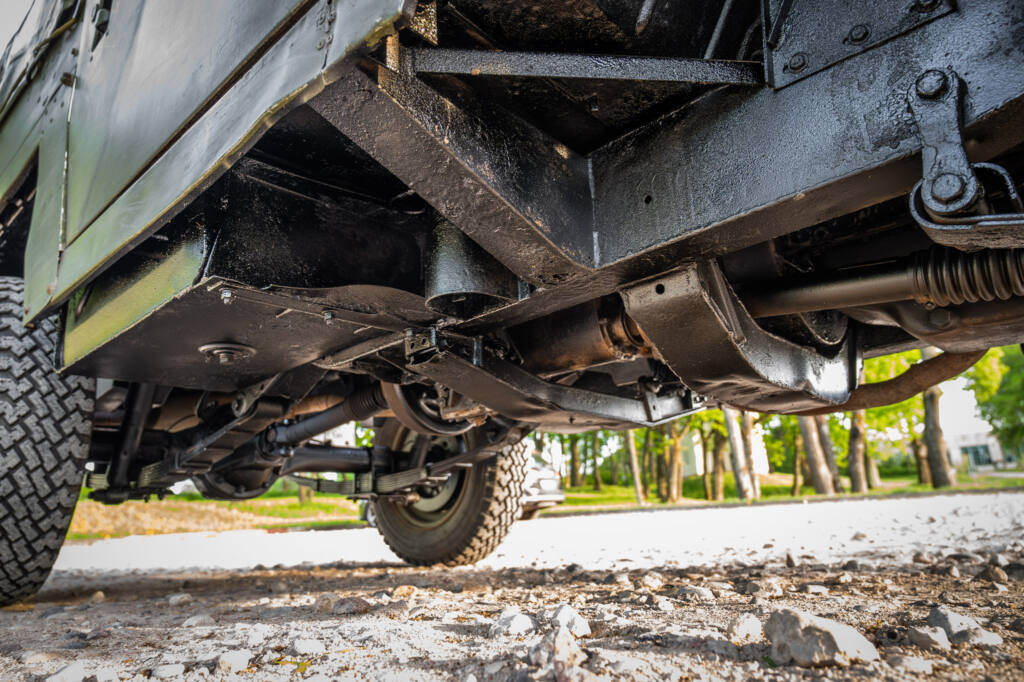
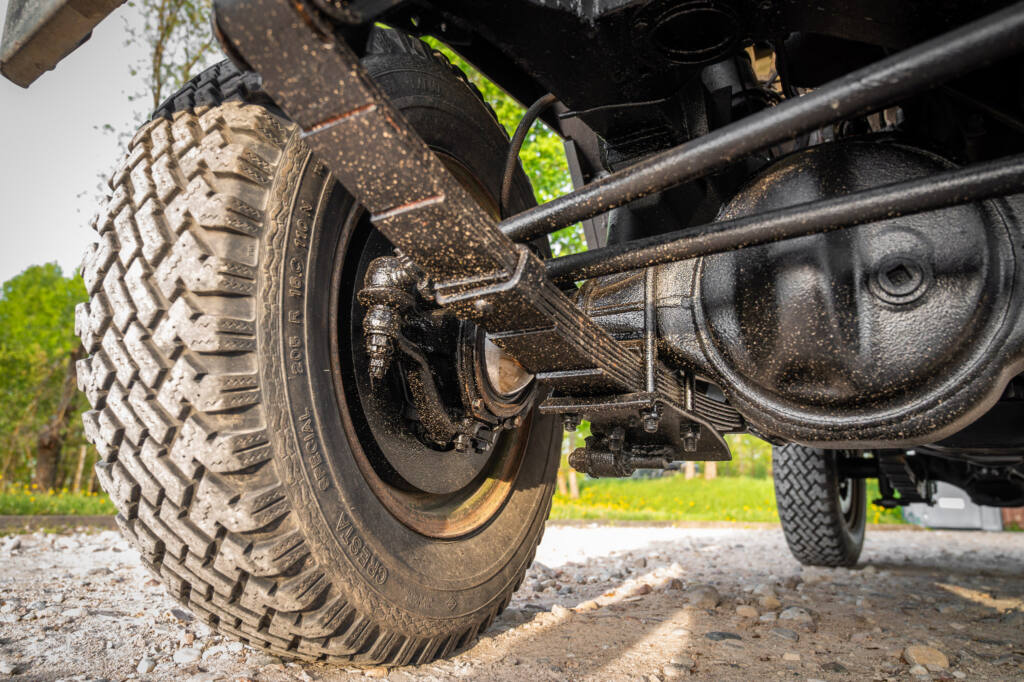
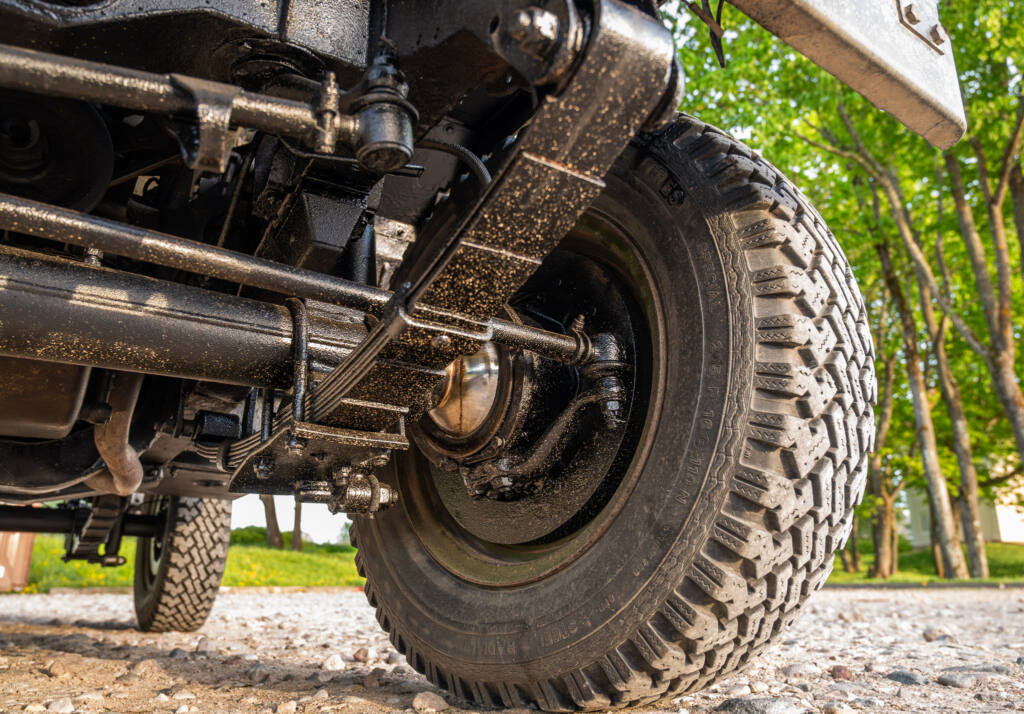
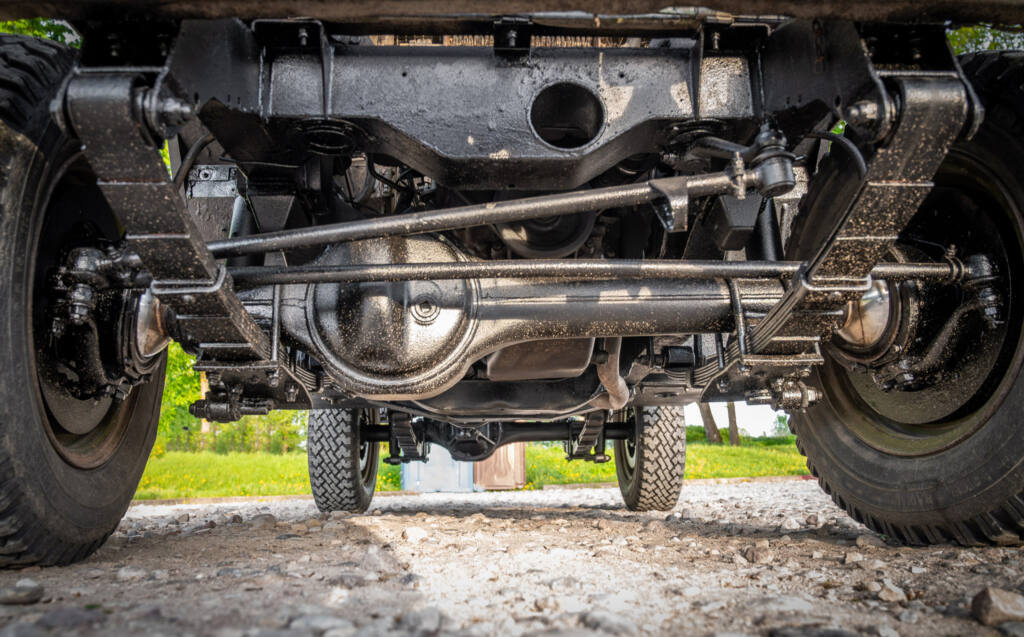
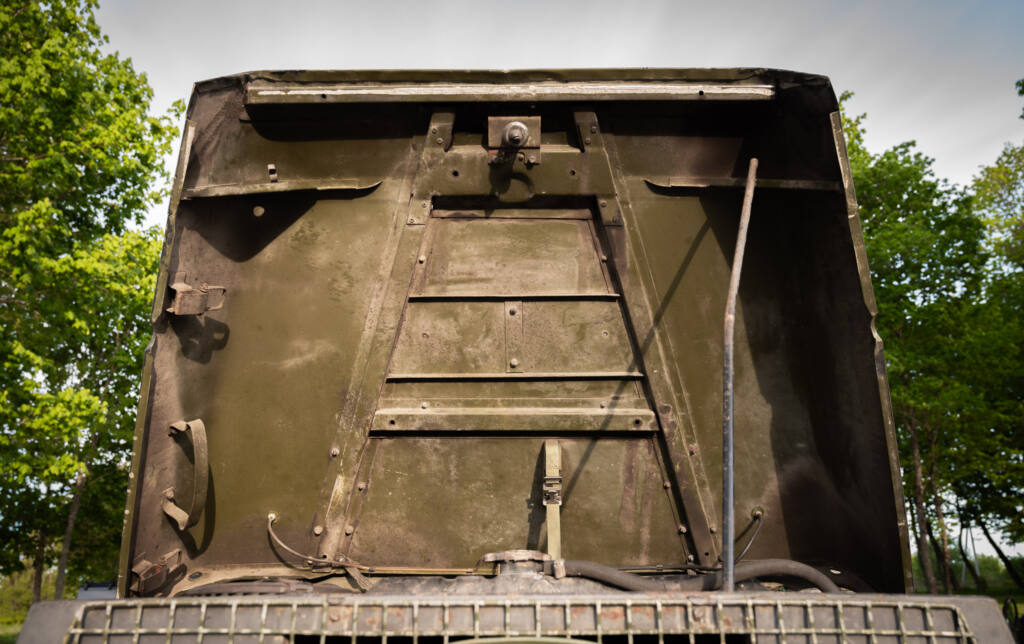
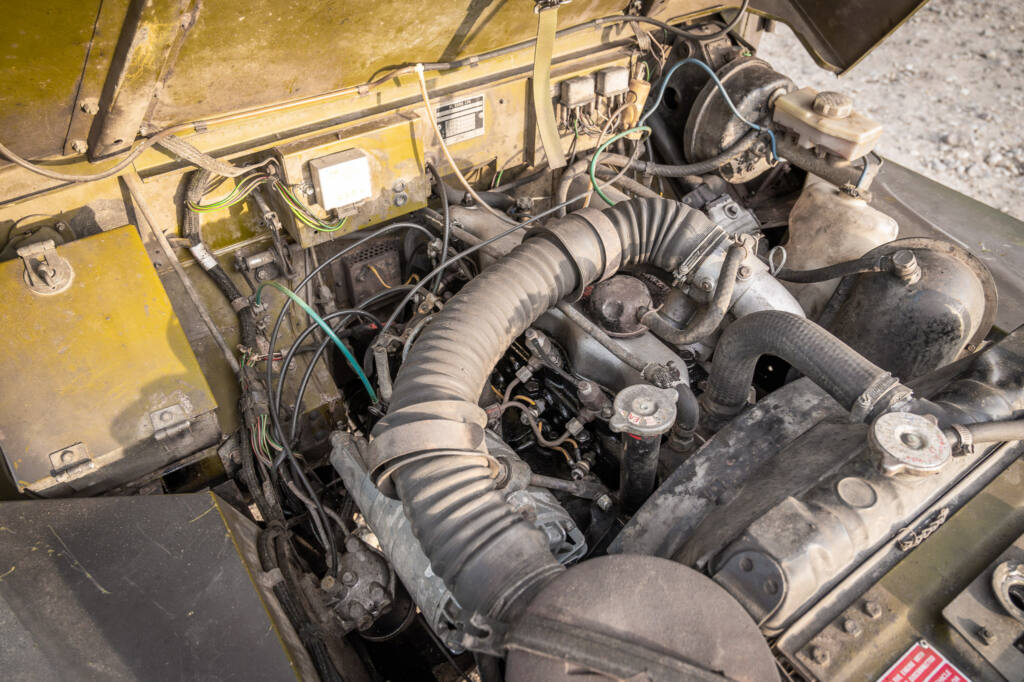

The Car
It goes without saying that we are particularly excited about bringing a late Series III Airportable Lightweight to makret. Land Rovers military vehicle variants are arguably some of the most resilient models produced. This model was first commissioned by the Danish Army in 1981. It was then later gifted to the Lithuanian Land Forces (LLF) under a joint Danish - Lithuanian project. The LLF was formed in 1991 to form the backbone of the countries defence force and form an integral part of NATO’s forces. Being a late model lightweight production vehicle, it represents a great usable military variant benefiting from later synchromesh gearbox, larger clutch plate and Smith’s interior heater.
Overall the vehicle presents in great original shape. There is no evidence of any modifications from its original specification. The original matching numbers Diesel 2 ¼ engine starts with half a turn of the key. The Smiths heater quickly fires into life. The gearbox works through all gears precisely without hesitation. It’s evident that the vehicle has been well maintained, there is a selection of replacement engine components. Both high and low range function without hesitation.…
The Car
It goes without saying that we are particularly excited about bringing a late Series III Airportable Lightweight to makret. Land Rovers military vehicle variants are arguably some of the most resilient models produced. This model was first commissioned by the Danish Army in 1981. It was then later gifted to the Lithuanian Land Forces (LLF) under a joint Danish – Lithuanian project. The LLF was formed in 1991 to form the backbone of the countries defence force and form an integral part of NATO’s forces. Being a late model lightweight production vehicle, it represents a great usable military variant benefiting from later synchromesh gearbox, larger clutch plate and Smith’s interior heater.
Overall the vehicle presents in great original shape. There is no evidence of any modifications from its original specification. The original matching numbers Diesel 2 ¼ engine starts with half a turn of the key. The Smiths heater quickly fires into life. The gearbox works through all gears precisely without hesitation. It’s evident that the vehicle has been well maintained, there is a selection of replacement engine components. Both high and low range function without hesitation. The instrument dials also all function correctly. Structurally the vehicle is very sound the footwells our original and don’t suffer from corrosion. The frame has certainly been undersealed during its time in the military, which has likely help to preserve its condition. There is no evidence of any repair works to the frame, which is a true testament to the overall condition.
In summary this is a fantastic survivor condition Lightweight, that can be used enjoyed straightaway.
History Of The Land Rover
In the early 1960s both the Royal Marines, then largely based aboard commando carriers, and the British Army required a vehicle that could be carried by air. They had taken delivery of the Westland Wessex helicopter, which could carry a 1,134 kg load slung beneath.
The smallest Land Rover available at the time was a Series IIA 88” wheelbase, which was too heavy. Land Rover began work on a lightweight version to fit the specifications in 1965.[1] A new modification to the basic Series IIA was devised by making many body components easily detachable and removing many non-essential items. The result was the Land Rover Half-Ton, known widely as the Lightweight or Airportable. In practice, to reduce weight sufficiently for the helicopters of the day to lift them in combat conditions, the tilt (roof) and sticks, the upper parts of the body, the doors and windscreen were removed, to be refitted later. The most significant change, however, was a reduction in width by 4 inch, by redesigning the standard Series IIA axles and fitting shorter half-shafts, which meant it would fit on a standard pallet.
Complete, the Lightweight IIA weighed 1,202 kg, over the specified weight. The term Lightweight appears misleading as a standard 88 Land Rover weighed 1,318 kg, but the higher total weight was due to the various frame reinforcement required for military usage.[2] However, with the removable body panels taken-off it was below the limit. Since improvements to the helicopters meant more lift was available, the MoD accepted it for use.
The first production models were completed on 11 November 1968, and production continued until 1984.
Other Thoughts
We are well acquainted with shipping Land Rovers and classic cars worldwide, with regular shipments to the Middle East, Canada, and the USA. Please don’t hesitate to get in touch to discuss import costs, and shipping costs, or for a recommended shipping agent in your location to assist with customs clearance.
For US buyers we can offer the following indicative shipping and customs clearance packages:
Fee Price: $3,250.00
This leaves you only responsible for paying US Customs Duty to our US customs broker upon clearance of your vehicle from any US East Coast port. We can arrange inland delivery to your driveway at an additional cost.
Note: Excludes US customs duties, bonds, and VAT on the import (approx. 3.25% / passenger vehicle)
Additionally, all-risk insurance can be offered for 2.2% of the vehicle value, the insurance has a £2500 deductible and a minimum premium of £125.
SHIPPING INFORMATION
Mainland European delivery by open transport from €450.00
USA & Canada RoRo shipping from $1150.00
European export declarations from €120.00
Cargo insurance from 1.9% of vehicle value
Local import clearance services also available across US, Canada and Europe
Samuel Lloyd & Co was founded to combine a passion for adventure and all things automotive. A pan-continental car dealer operating across the UK, Europe and US.
We bring to together collectable cars with exceptional relocation services.
Registered in England & Wales
with number: 10654163
and European Union with number: 306632294
© SAMUEL LLOYD & CO LIMITED 2023 | ALL RIGHTS RESERVED